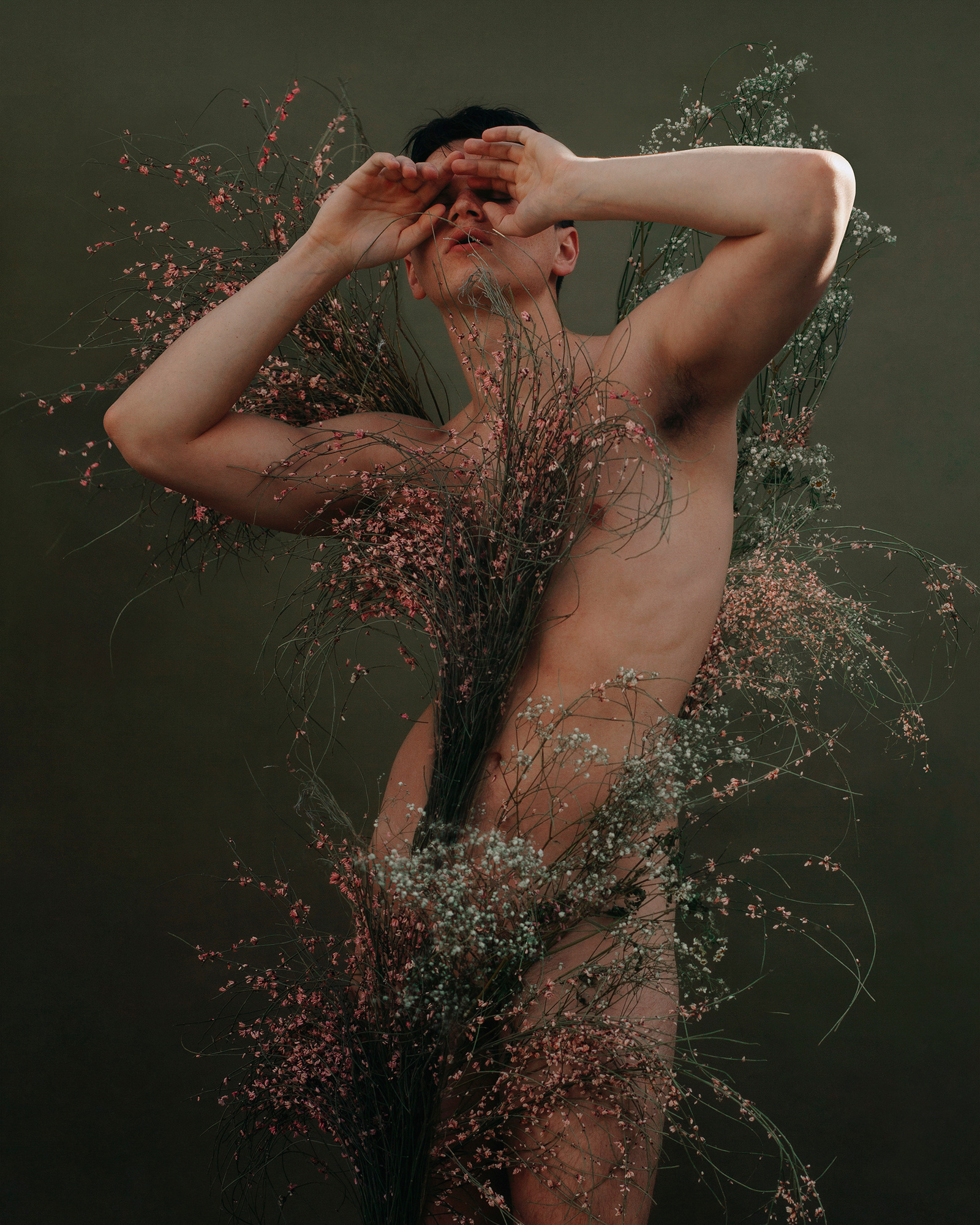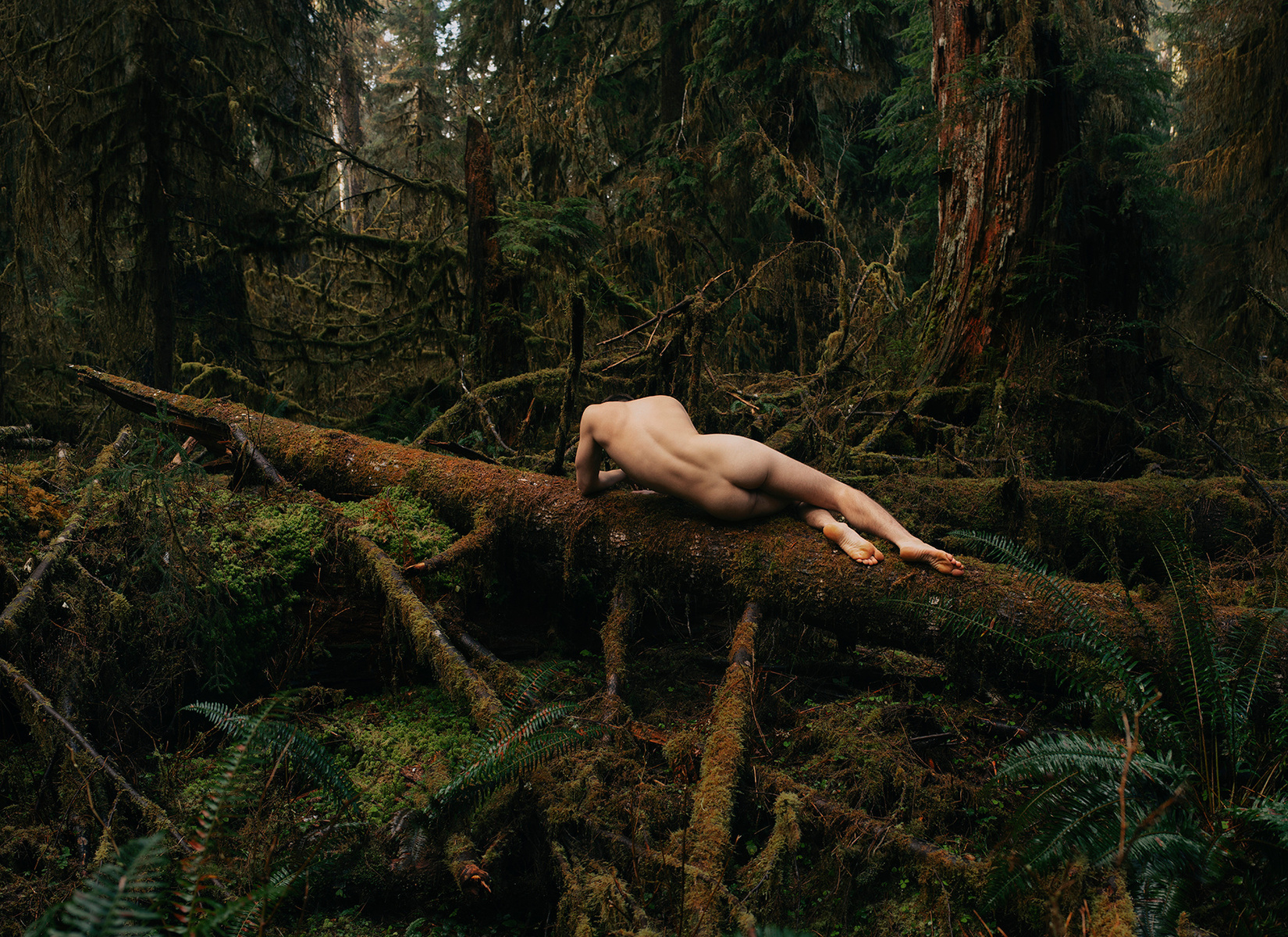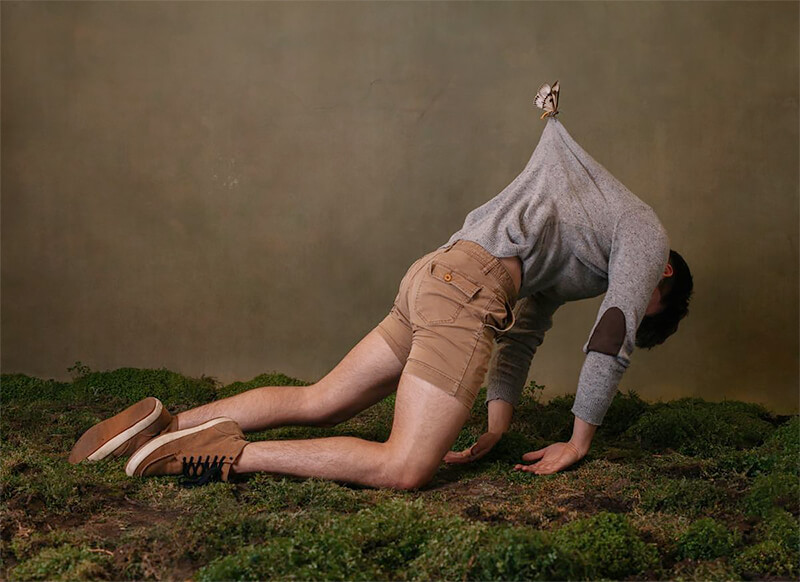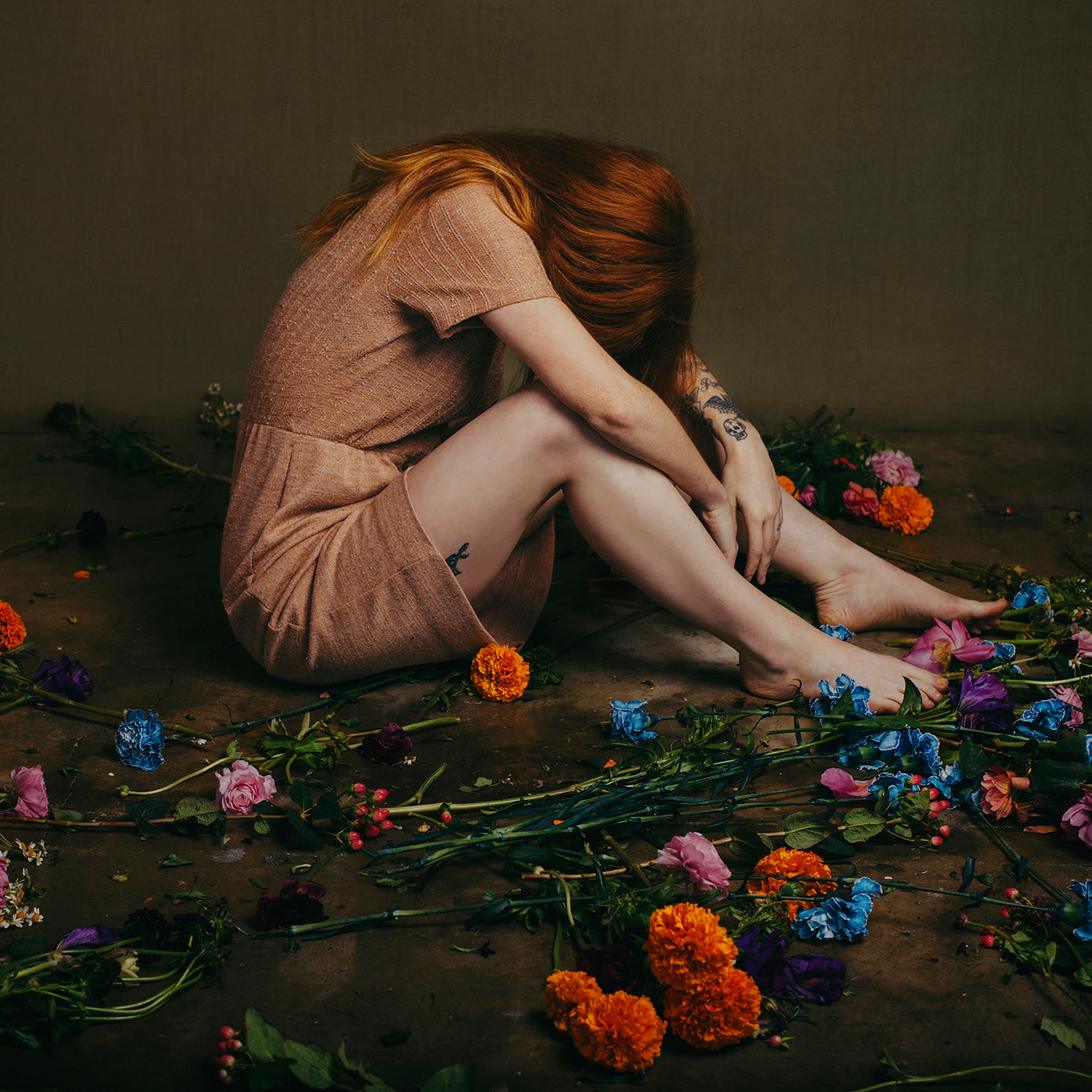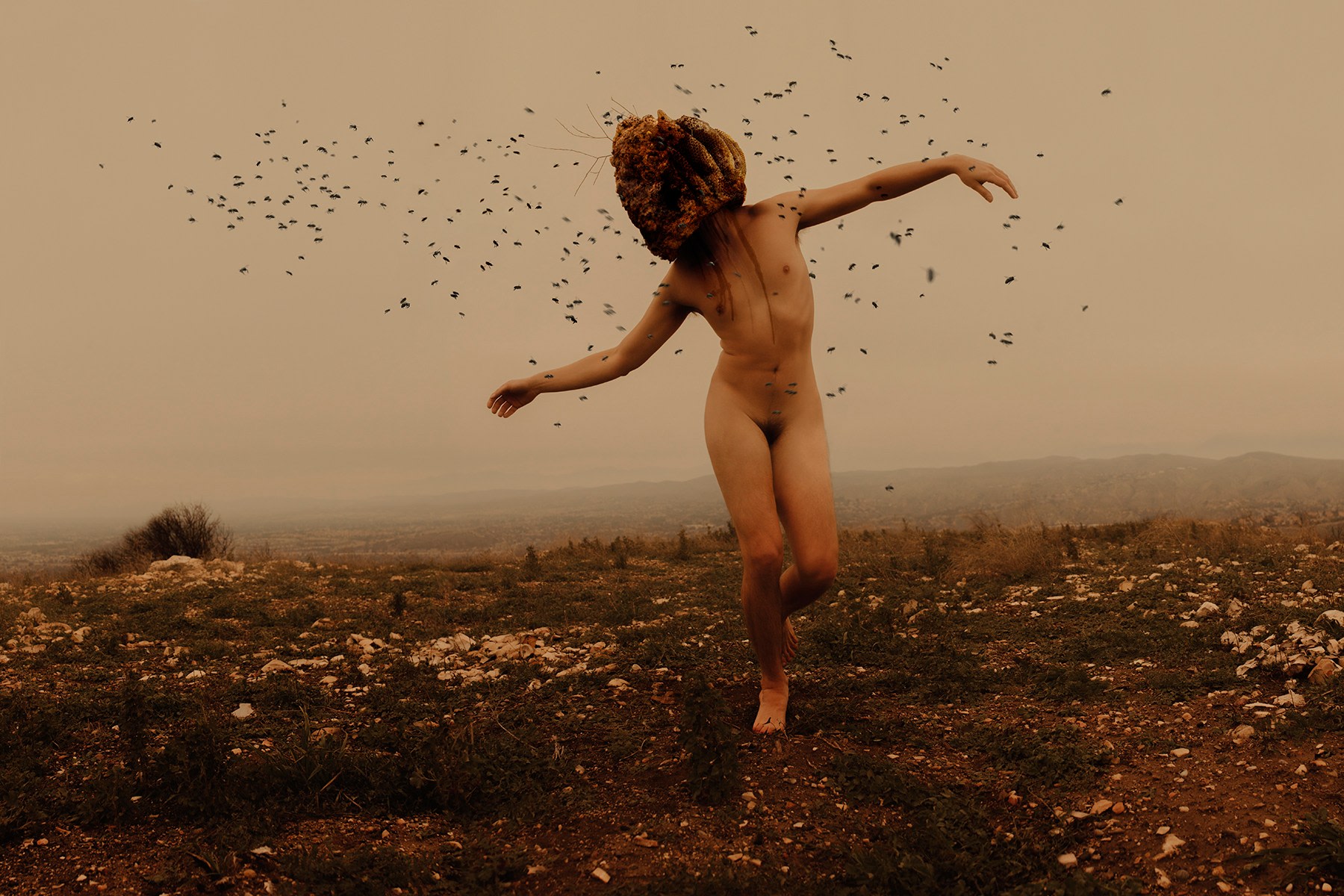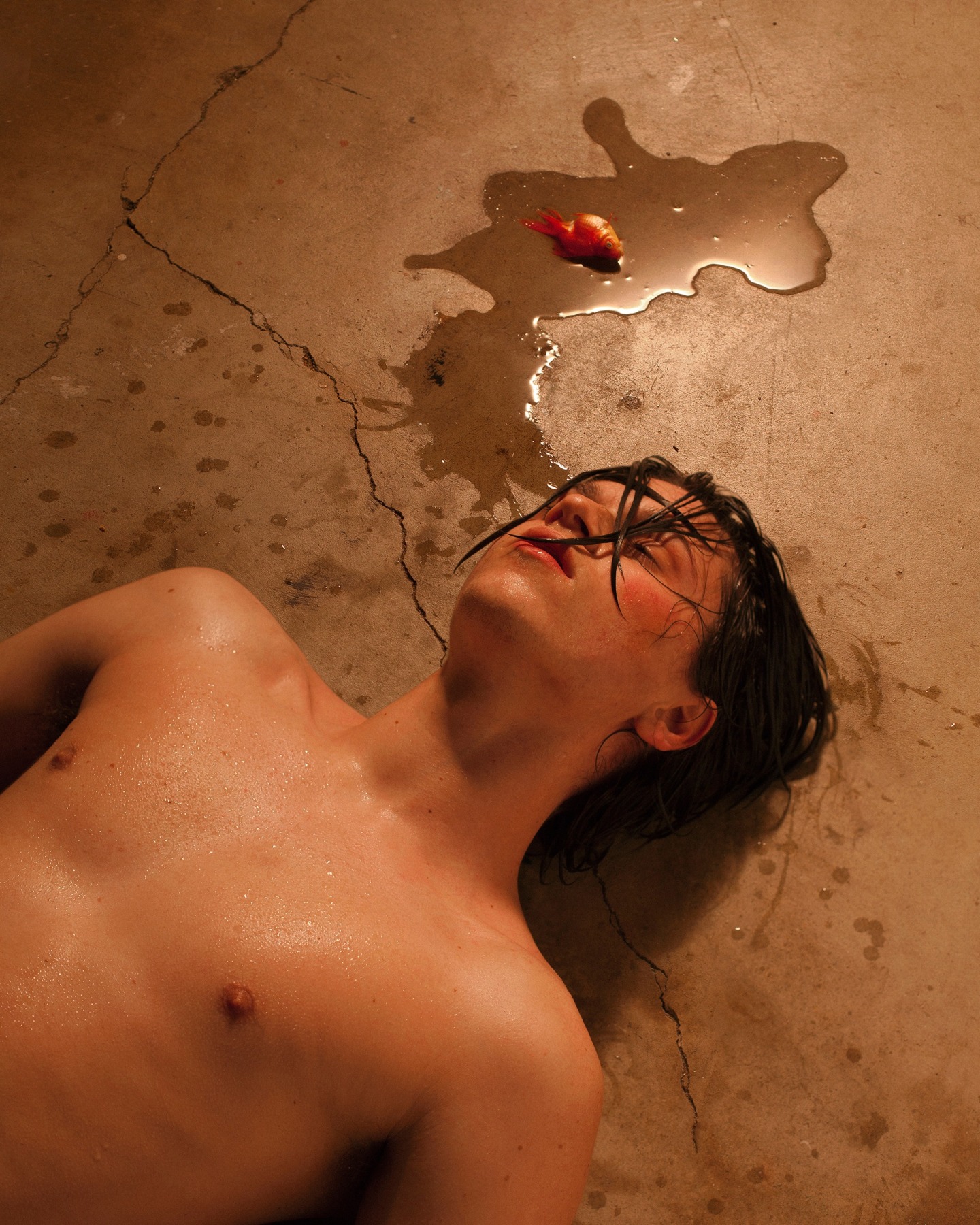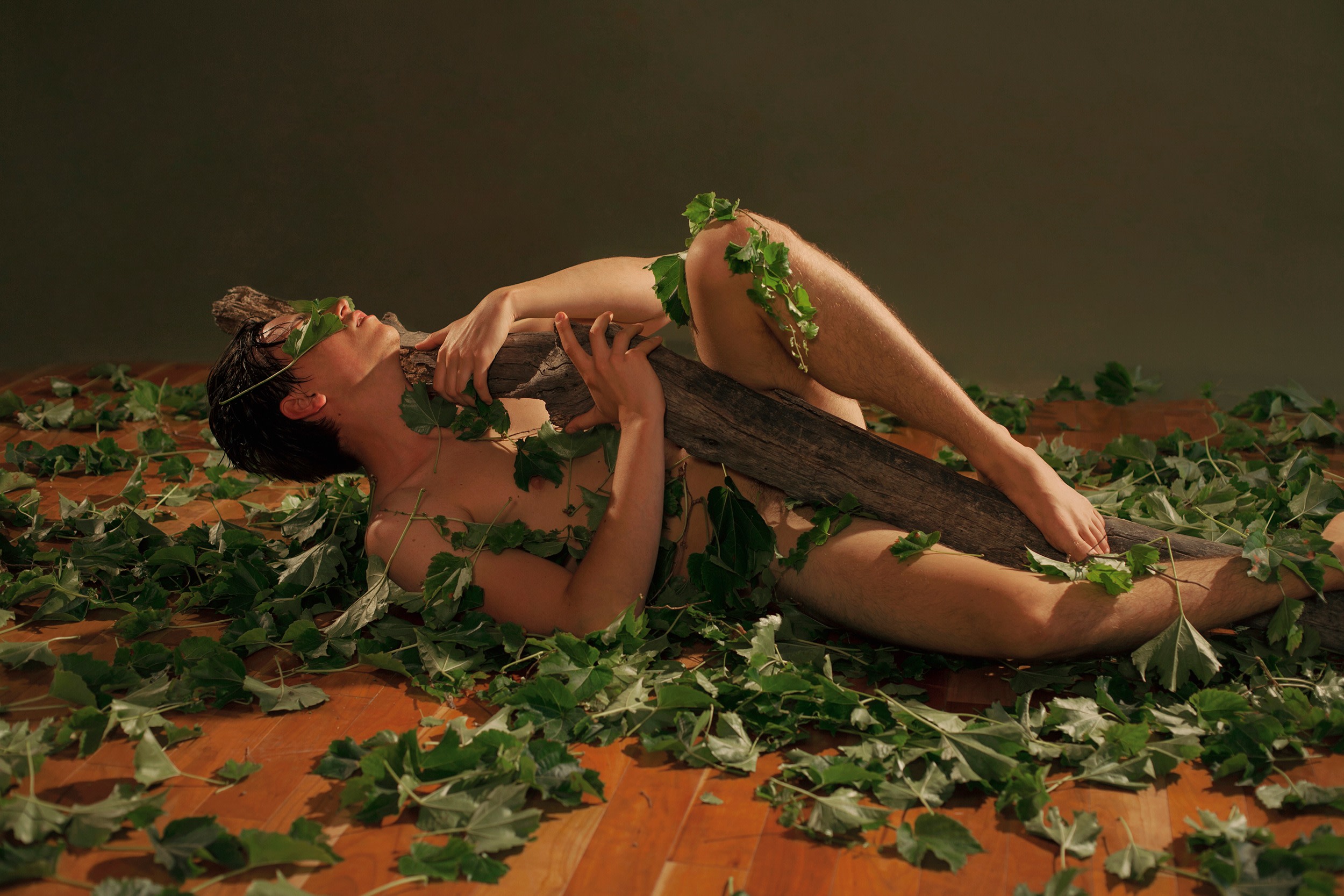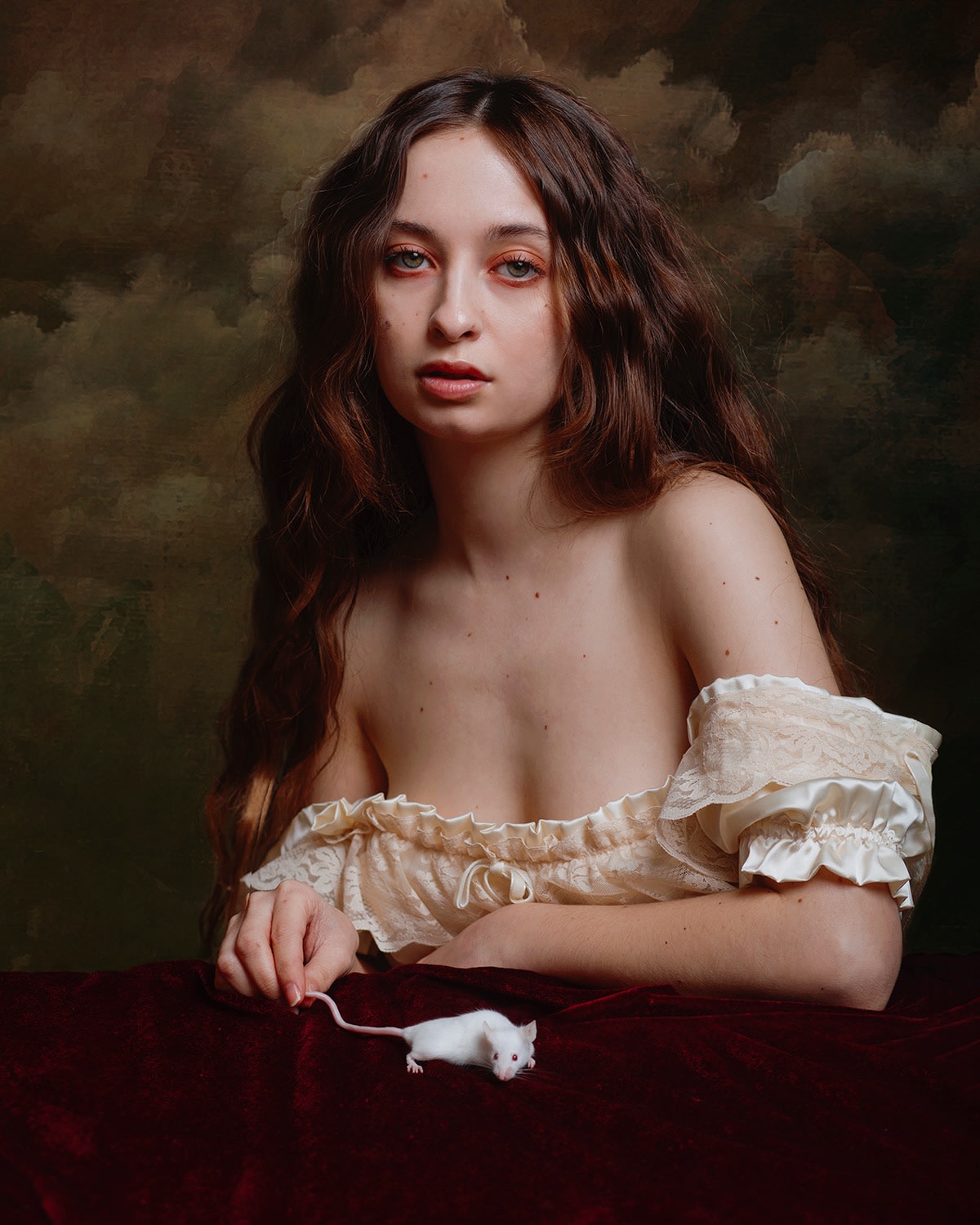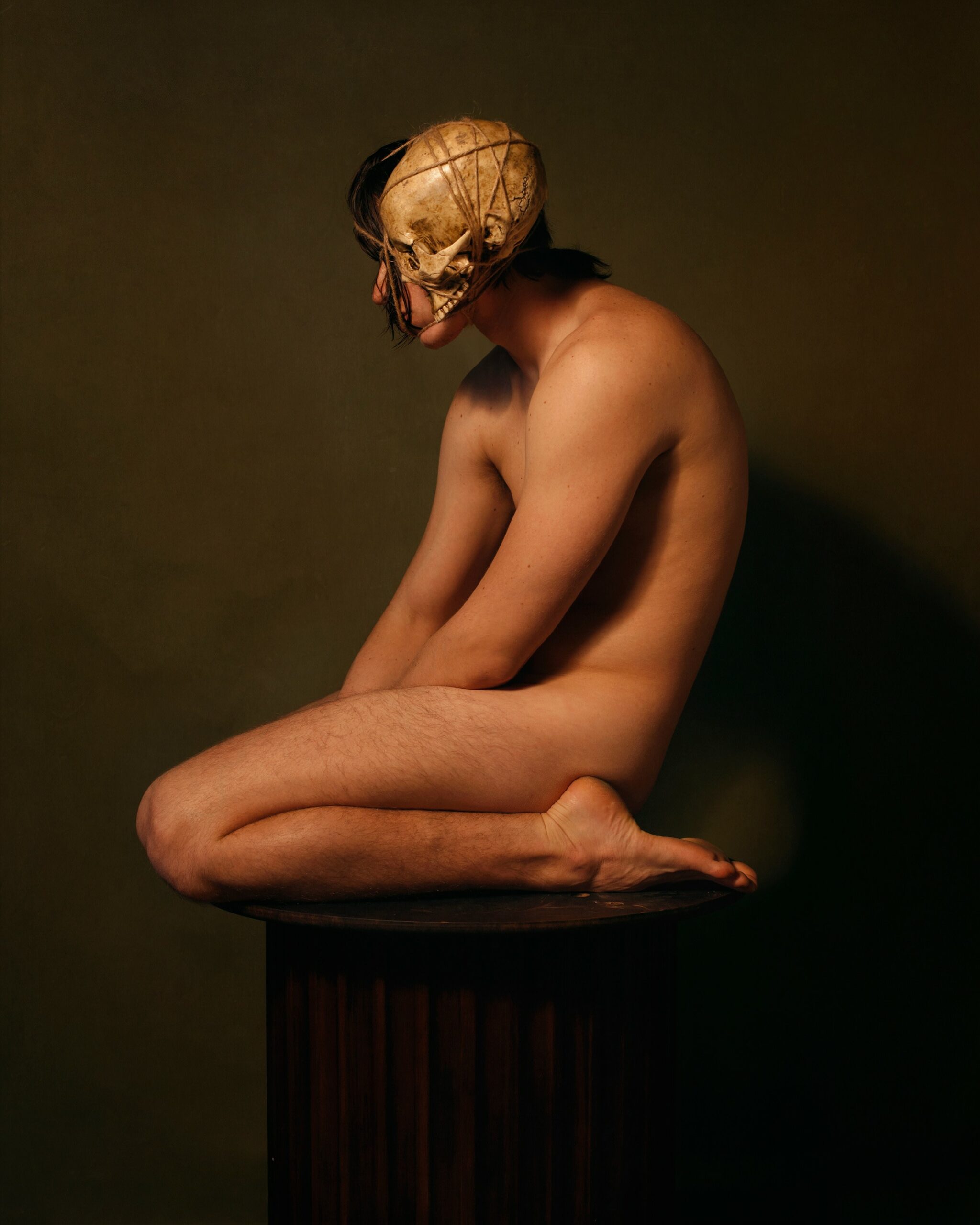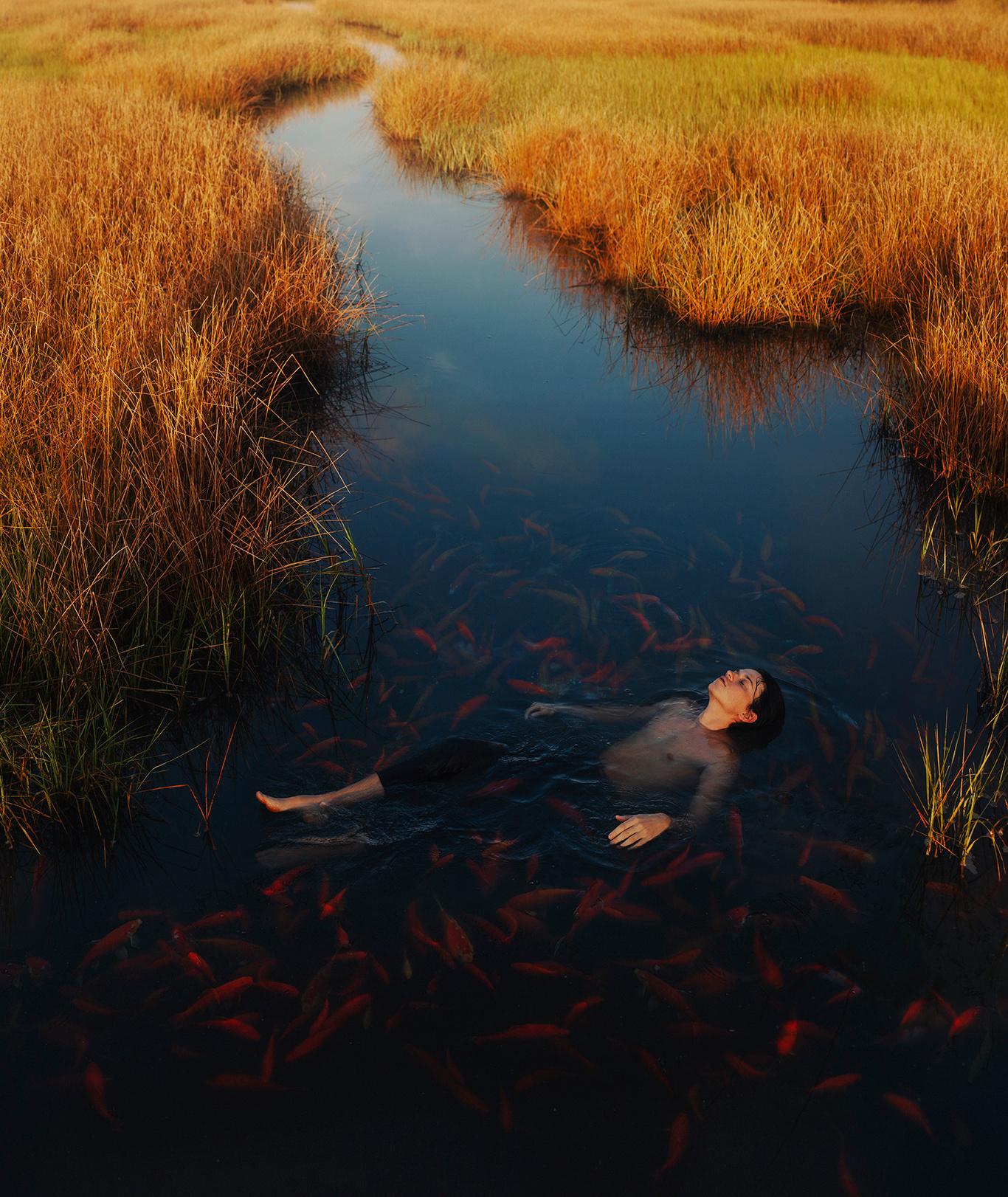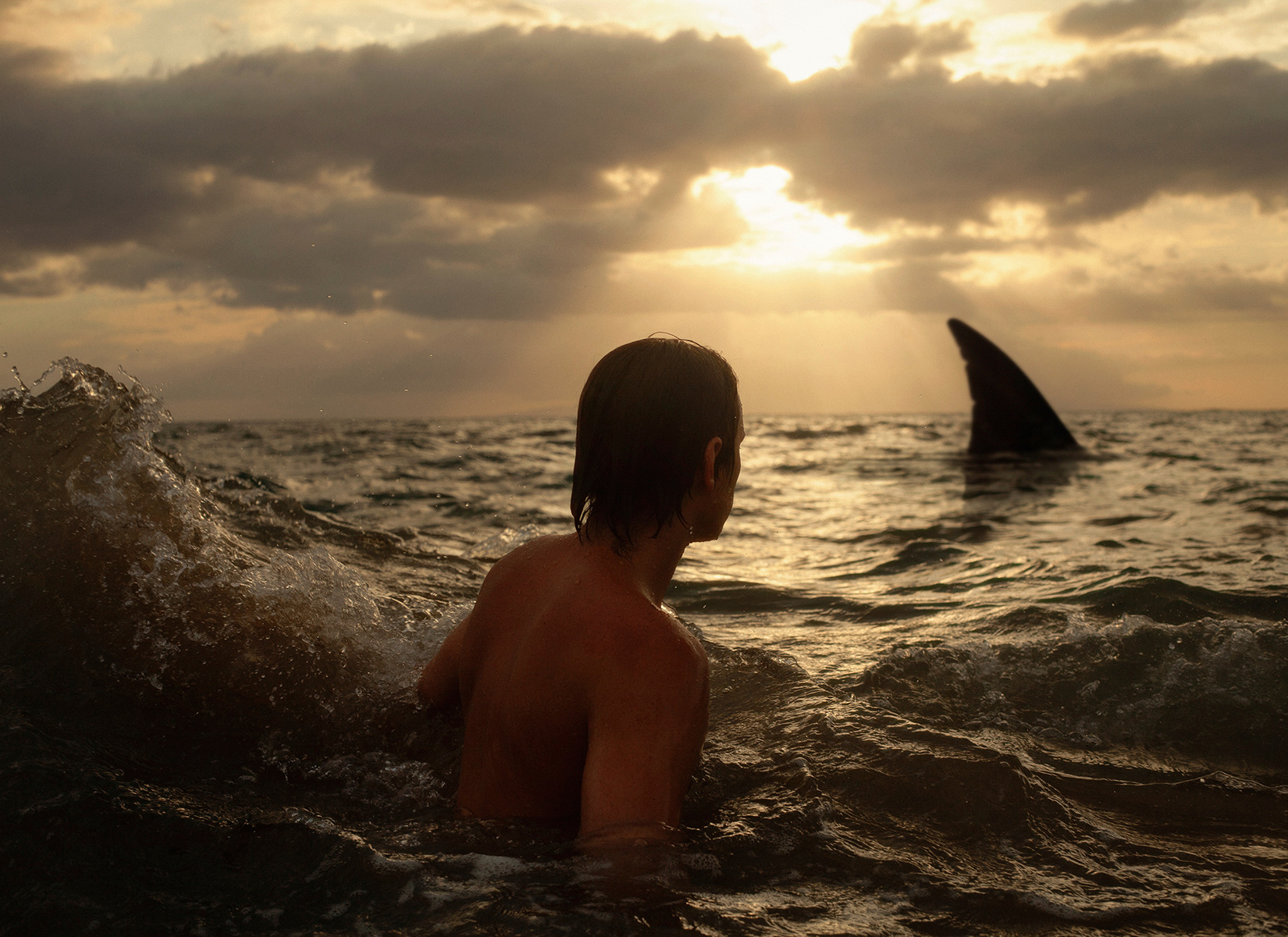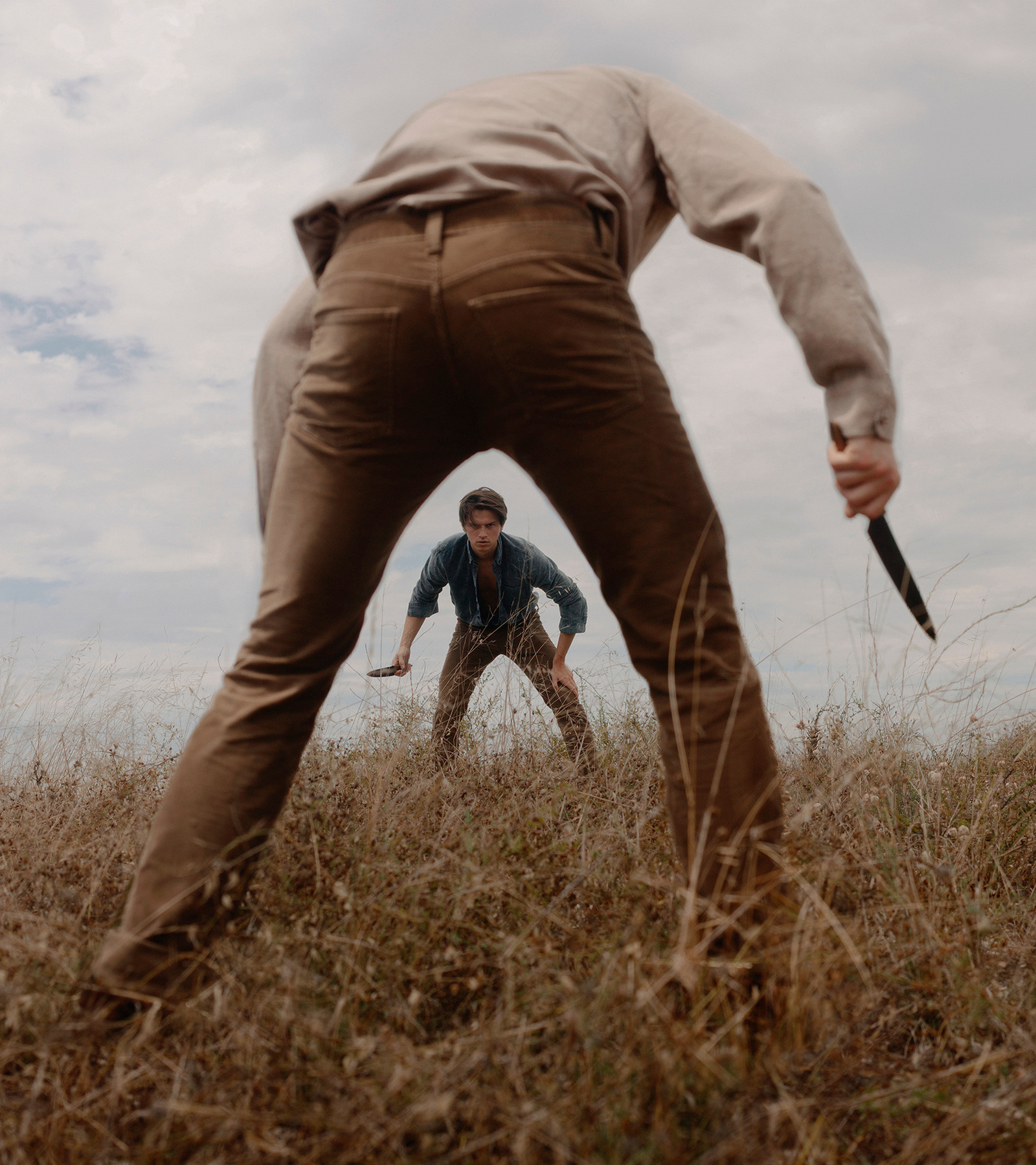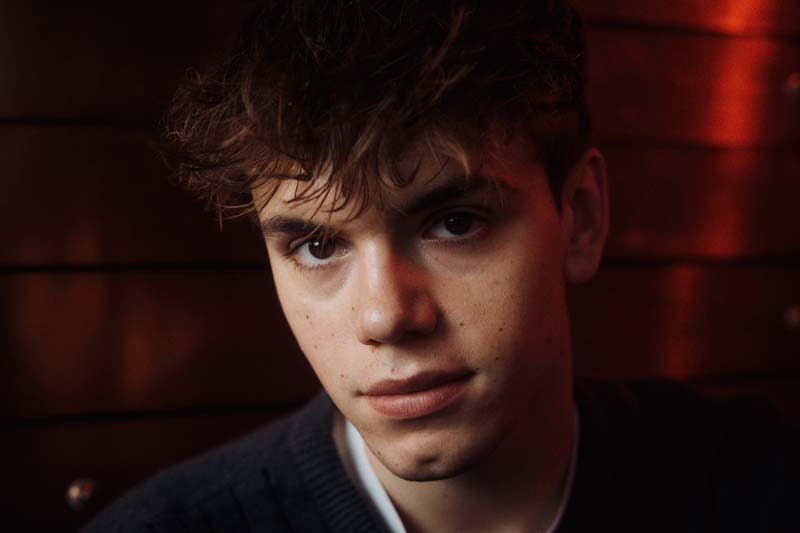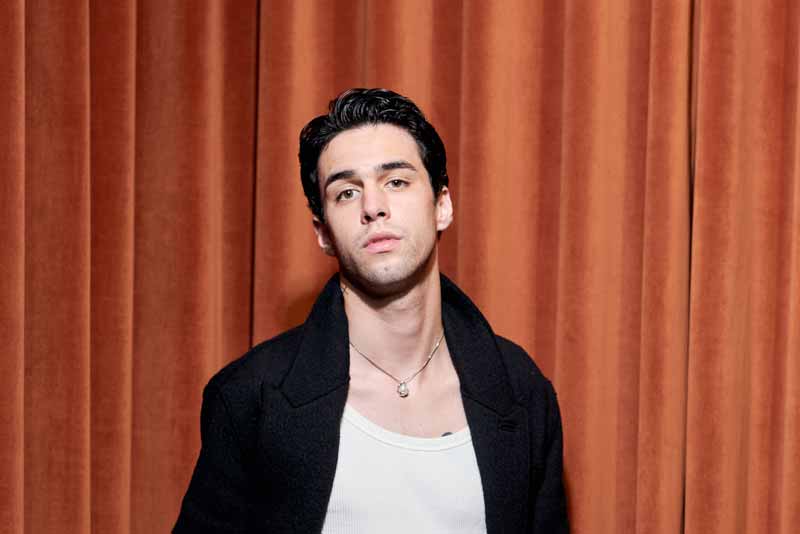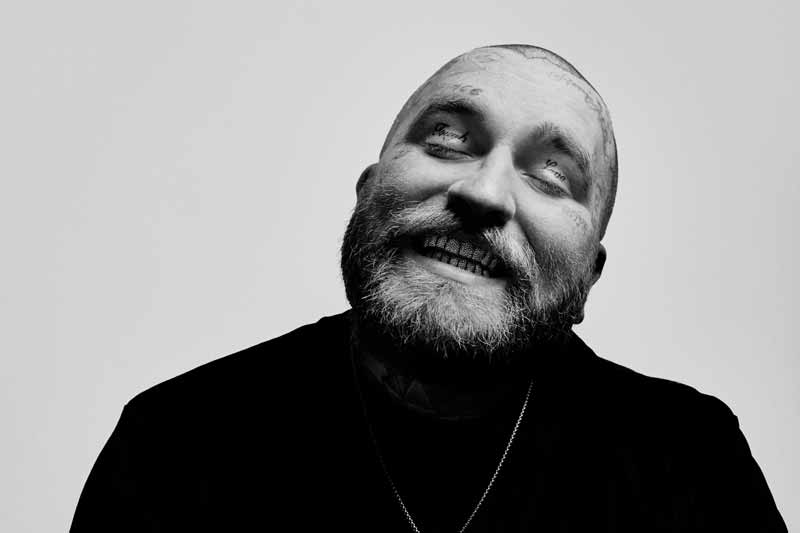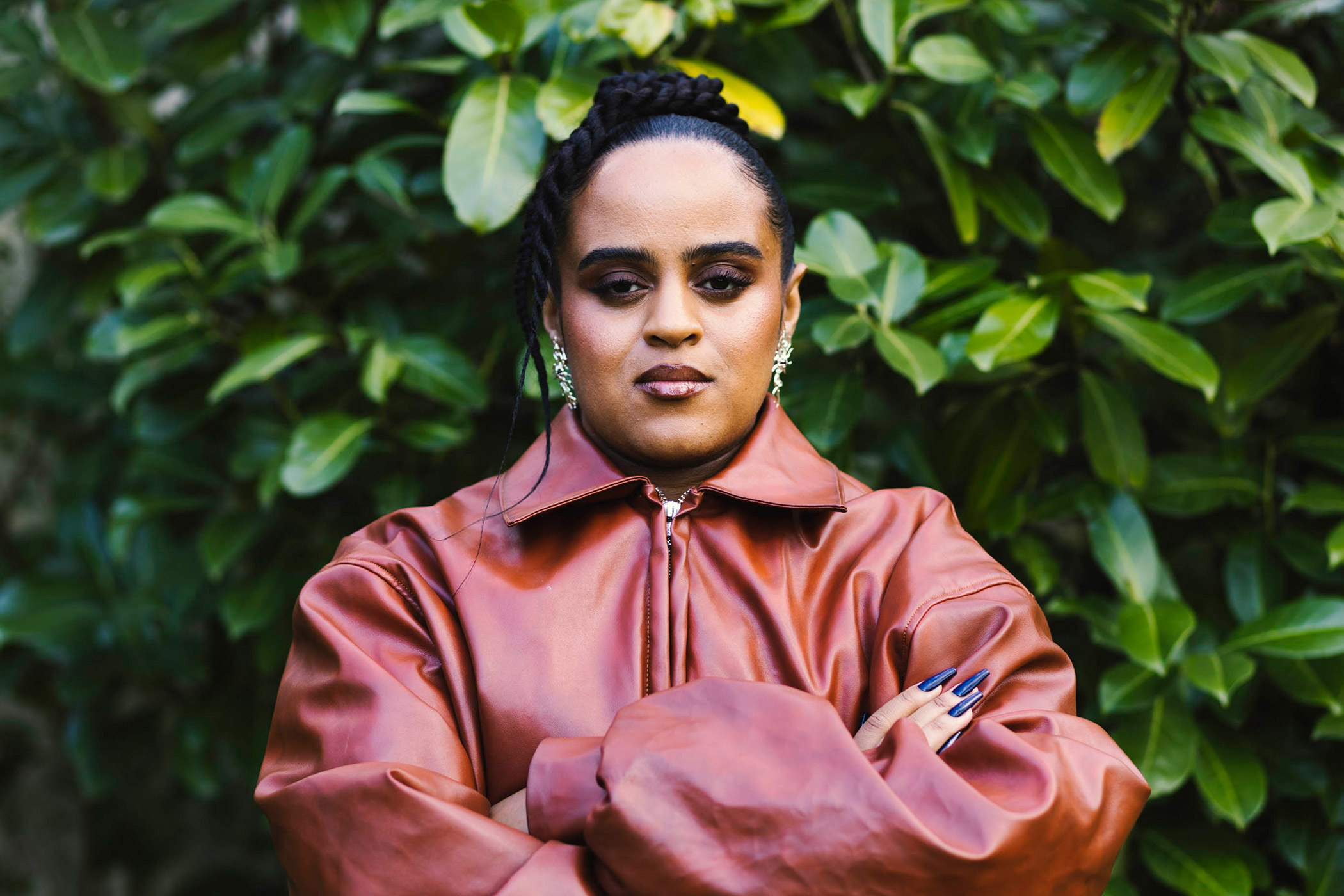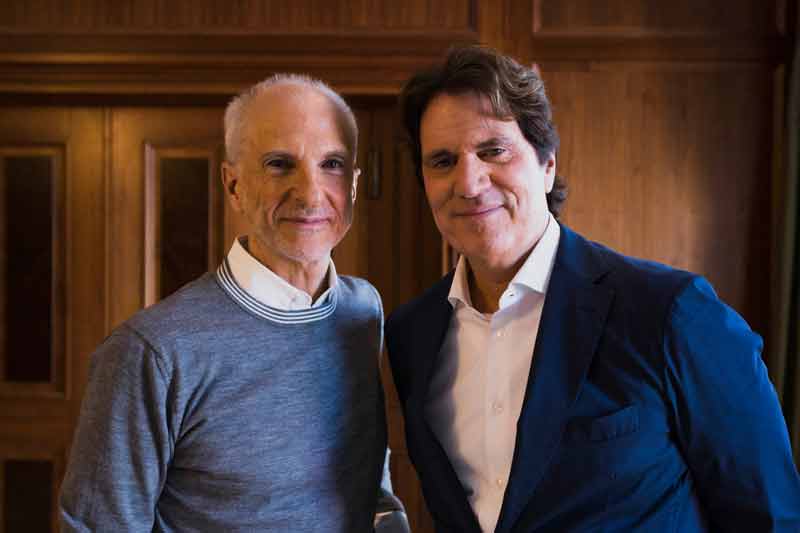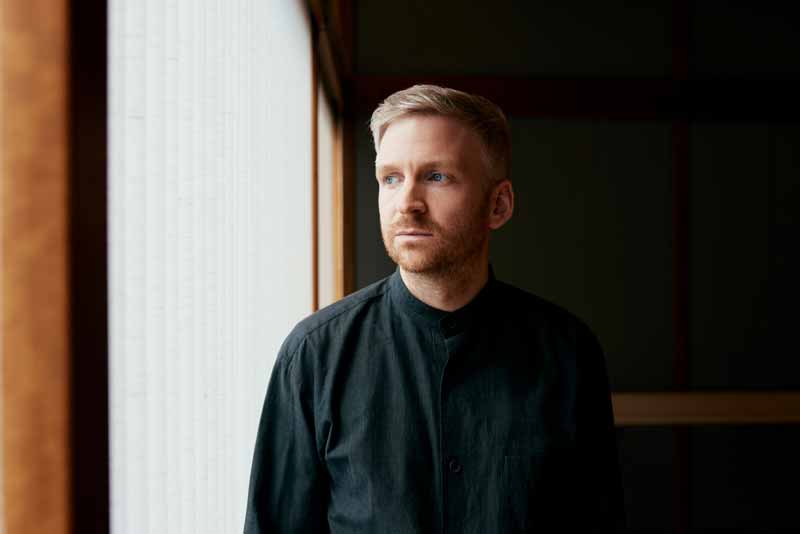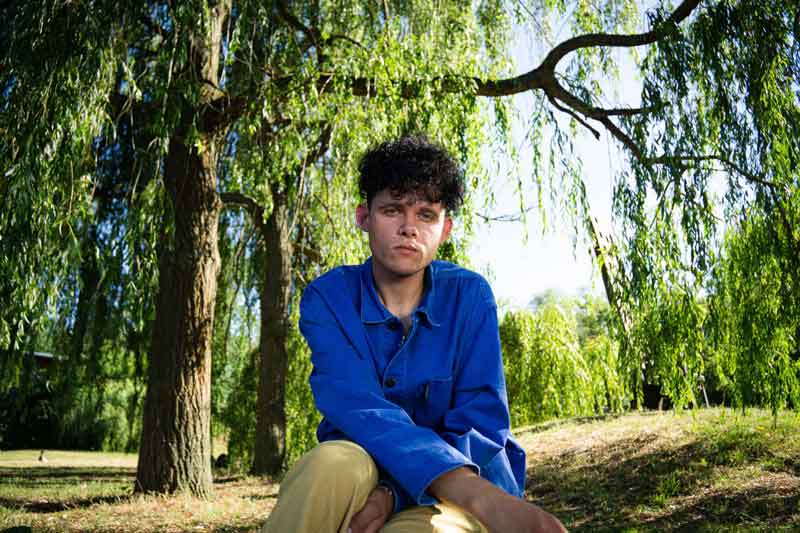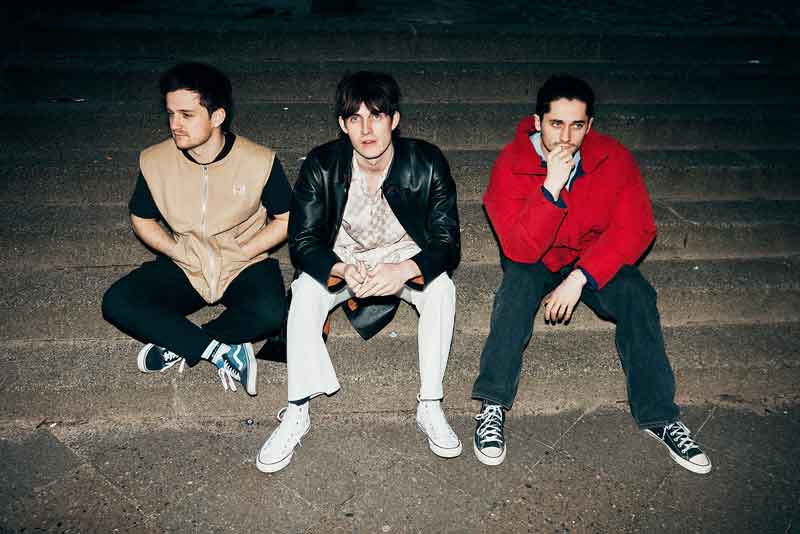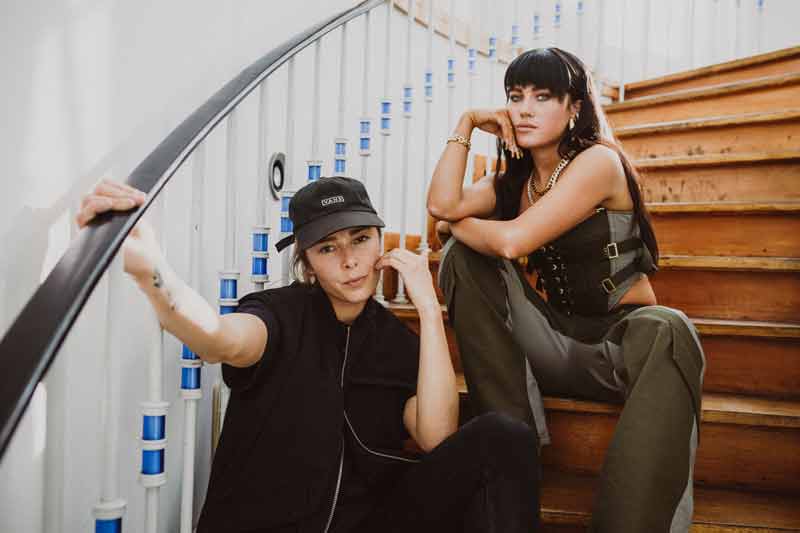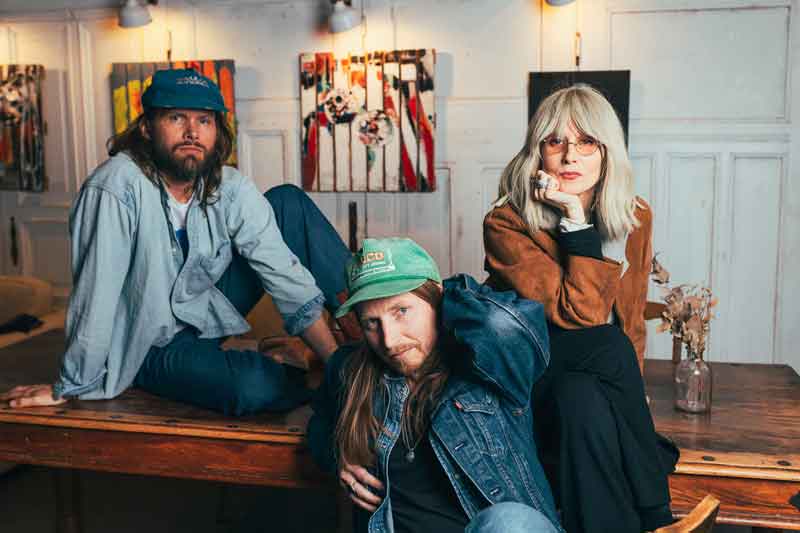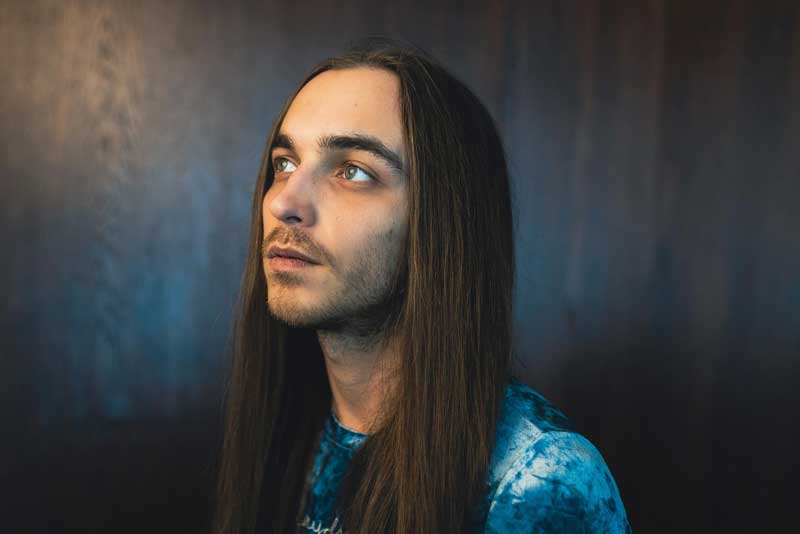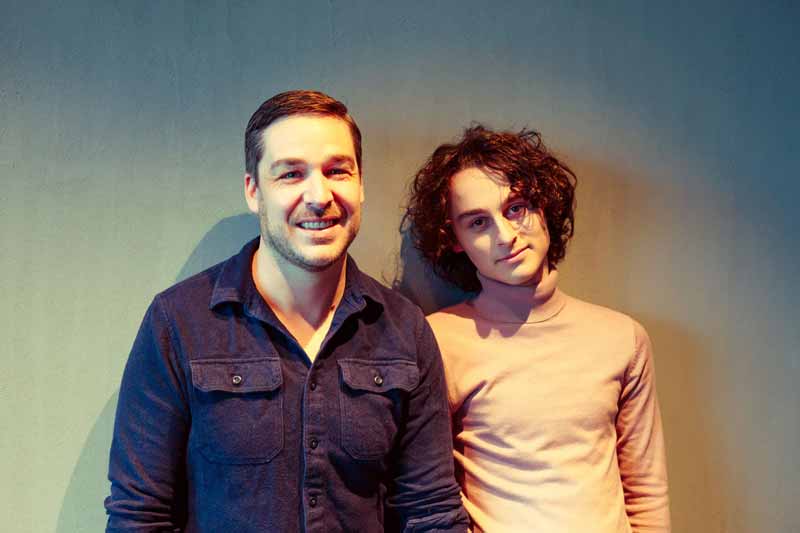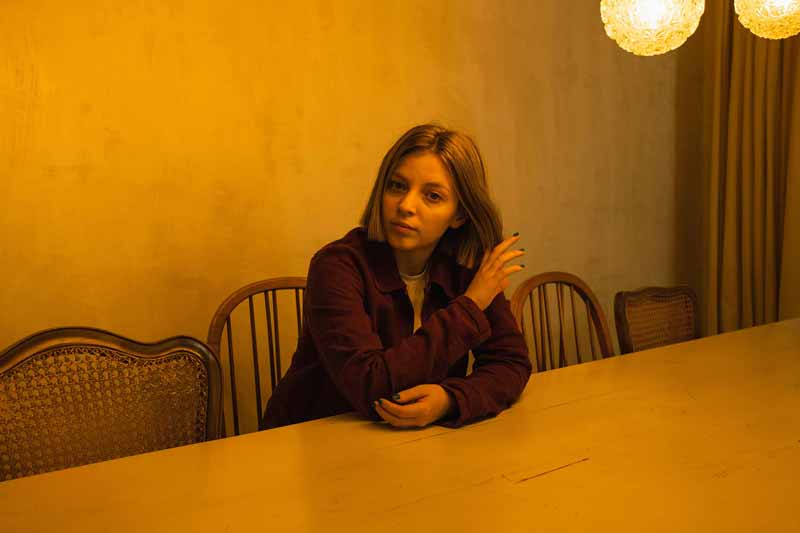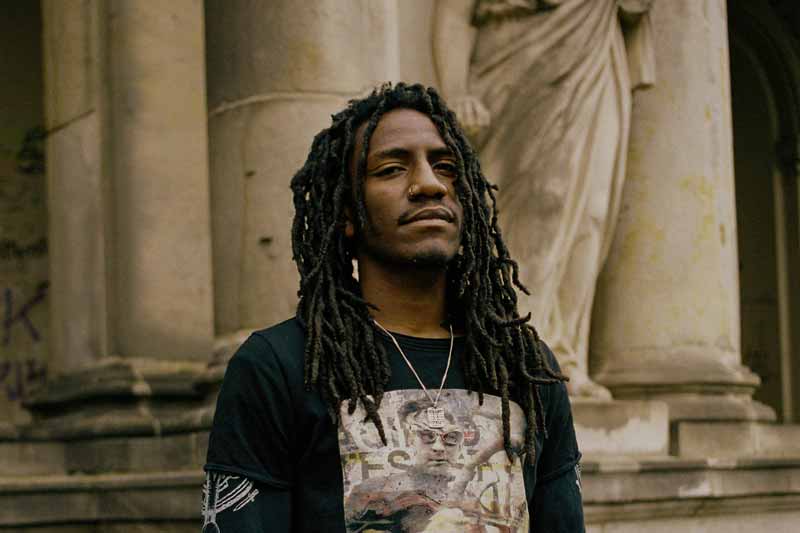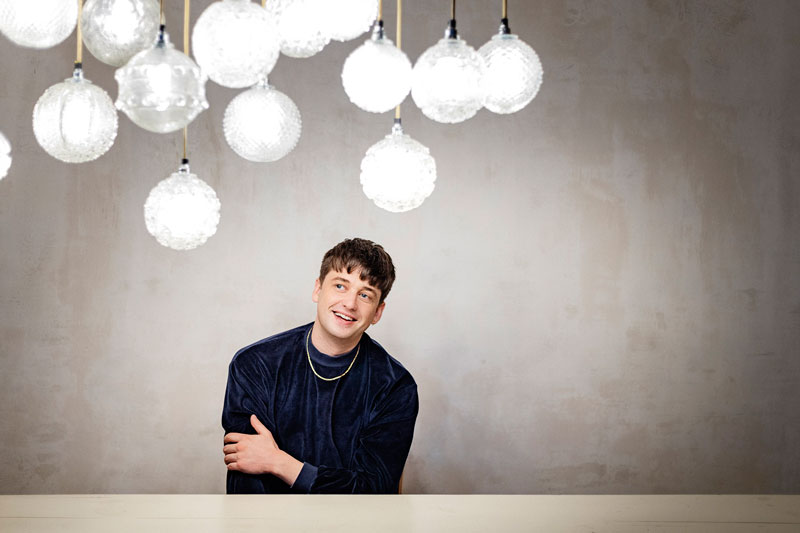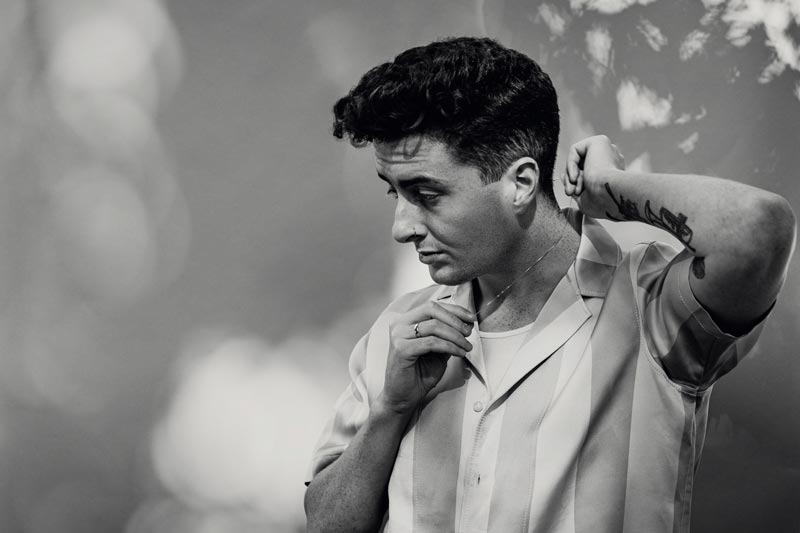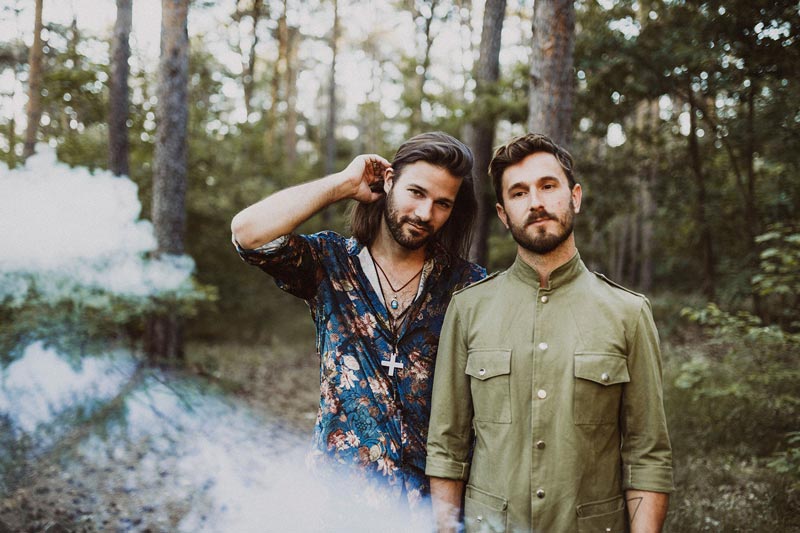Interview — Alex Stoddard
»I want my work to transcend time«
For more than a decade, American photo artist Alex Stoddard has been creating impressive visual worlds that deal with the reciprocal relationship between humans and nature. With his intimate, dreamy, and mostly surreal images, the 29-year-old has established a unique artistic style that fascinates people all over the world. With his latest project, INSEX, he explores the parallels between metamorphosis in the natural world and human coming-of-age. In an interview about not fitting in, the fascination of adolescence, and the attitude that there’s a place for all body types in art, Stoddard discusses his work.
16. März 2023 — Interview & text: Jonas Meyer, Photography: Osman Balkan
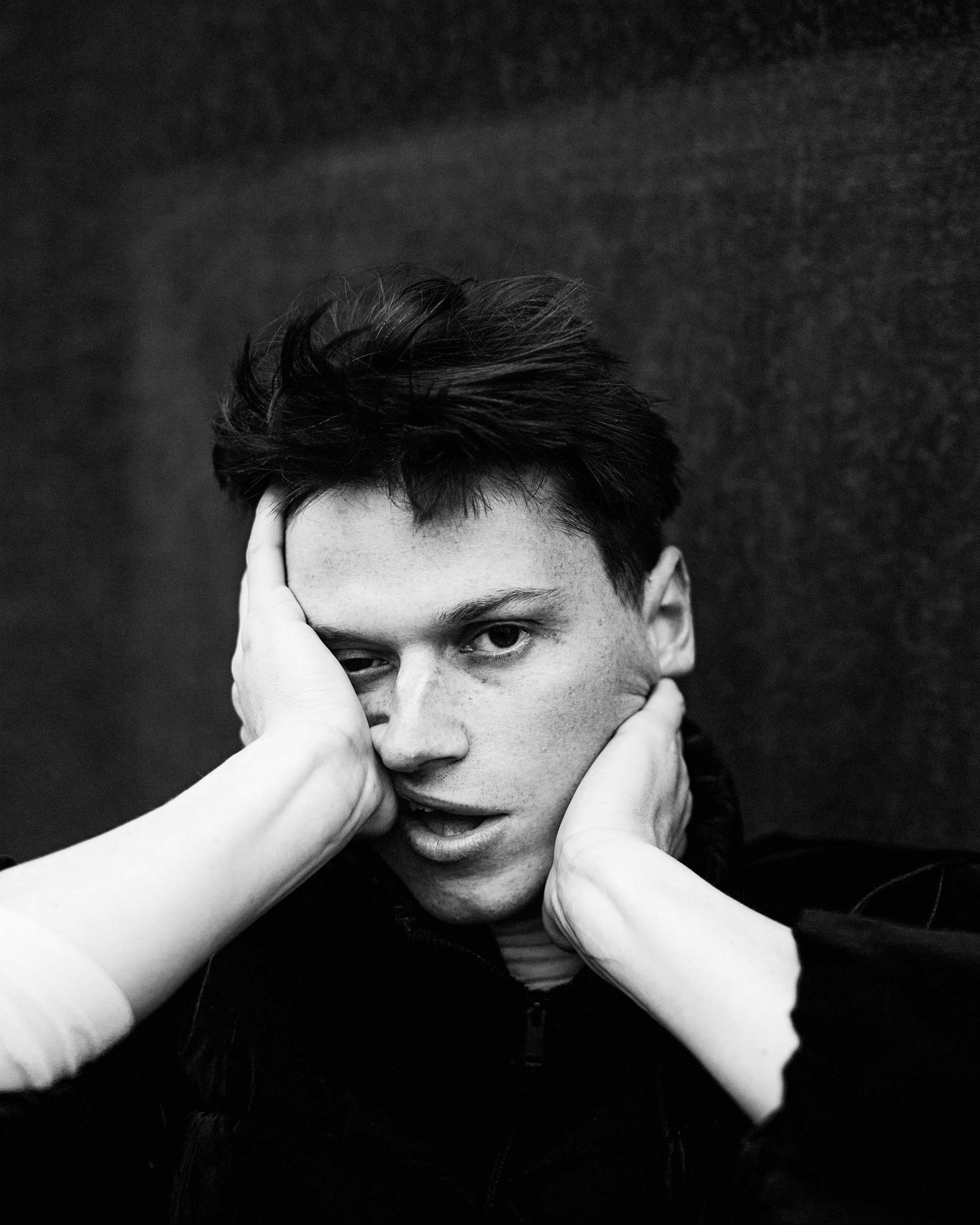
When people meet in Berlin, no matter when, no matter how, no matter where, the first minutes of the conversation often revolve around one all-important question: Were you born here, or did you move here?
While this question seems to be rather negligible for urban natives, it seems all the more relevant for those of group 2, especially if they have literally fled from the confinement and rejection they’ve experienced in their small towns and villages. Quite a few of them decided to throw themselves into the supposedly open arms of the metropolis, hoping to forget everything that happened in their lives before. So, it is not surprising that, in the end, their conclusion is simple. Big city: good. Small village: bad. And maybe you even agree.
Looking at Alex Stoddard’s images turns this equation completely on its head. The 29-year-old photo artist—who grew up in rural Georgia—describes with his art a form of desire that is pretty much the opposite of what you imagine a hip, fast-paced big-city life to be like. In intimate, dreamy, and mostly surreal motifs, he deals with the question of what place humans have in this world and how nature may reflect their emotions.
However, the young artist is not fighting against the urban—after all, he lives in Los Angeles himself. Rather, his impressive visual worlds open up a new perspective on the beauty and the inner peace that can be found in the great outdoors if only you let yourself discover it. Perhaps this is one of the reasons why he repeatedly shows himself as the protagonist of his photography.
With his latest project, INSEX, Alex goes one step further. In a comprehensive series of staged and highly stylized images—which are compiled in his debut book of the same name—he explores the parallels between metamorphosis in the natural world and human coming-of-age. He invites viewers into a colorfully dark world of budding sexuality and crawling insects.
We met the open-minded, reflective, and warm-hearted young artist for a personal interview and photo shoot, after he presented his newest book, in the rather unromantic, busy, and cold city center of Berlin.
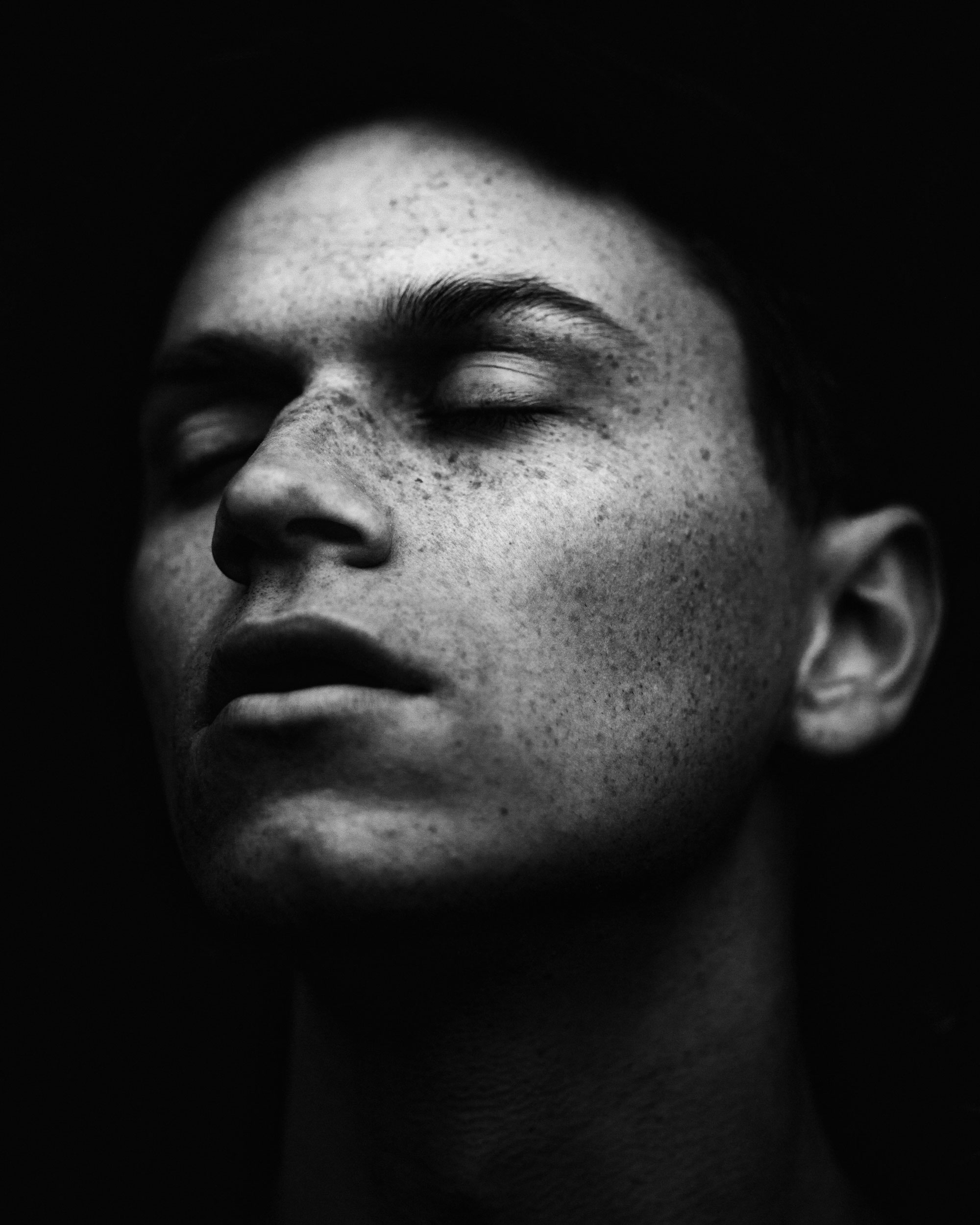
»I don’t want my work to ever be nailed down to a particular period by outfit or location.«
MYP Magazine:
With your art, you’ve always focused on the interaction of the human body with nature. What is your personal desire behind this approach?
Alex Stoddard:
Pure nature is incredibly beautiful. I’ve also found so many connections between humans and nature in the very physical sense, but in a way that certain natural elements can elicit an emotion in me, which probably applies to other people as well. Flowing water, for example, can have a very calming effect on people. I think that humans and nature are tied intrinsically to each other. Apart from this, nature is always a very timeless place to shoot. I want my work to transcend time. I don’t want it ever to be nailed down to a particular period by outfit or location. So, I like to shoot with clothing that’s very simple and nondescript, and in locations where it could be any time or place. That’s ambiguous, and I feel like that gives it a more universal aspect.
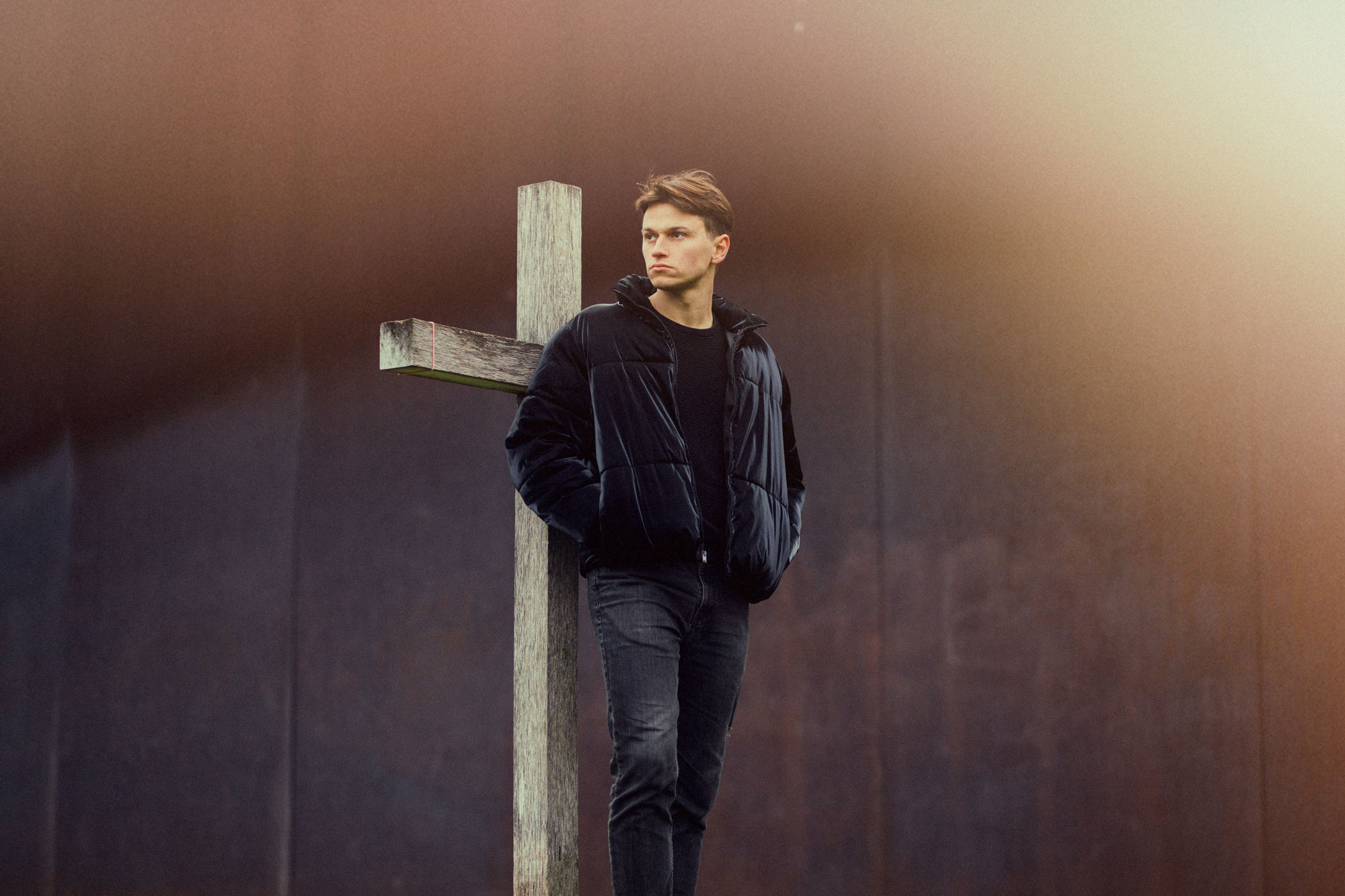
»I want my pictures to hopefully give a more emotional tone to the fact that we are really destroying the planet.«
MYP Magazine:
Does the damage to nature caused by human-induced climate change affect your work in any way?
Alex Stoddard:
Absolutely! Something I explore in quite a few of my photos is the human impact on nature—topics like how we are affected by species extinction, deforestation, or pollution. Some of my photos, for example, show me with a dead fish washed up on a beach, or myself flying among a bunch of chopped-down trees in a very deforested area. That’s something I really want to dive into more with my work in the future, beyond just creating something that is beautiful. I definitely want to explore more the topics of climate change and human impact on nature with my images. I want them to have some real-world impact, to bring more awareness, and hopefully give a more emotional tone to the fact that we are really destroying the planet.
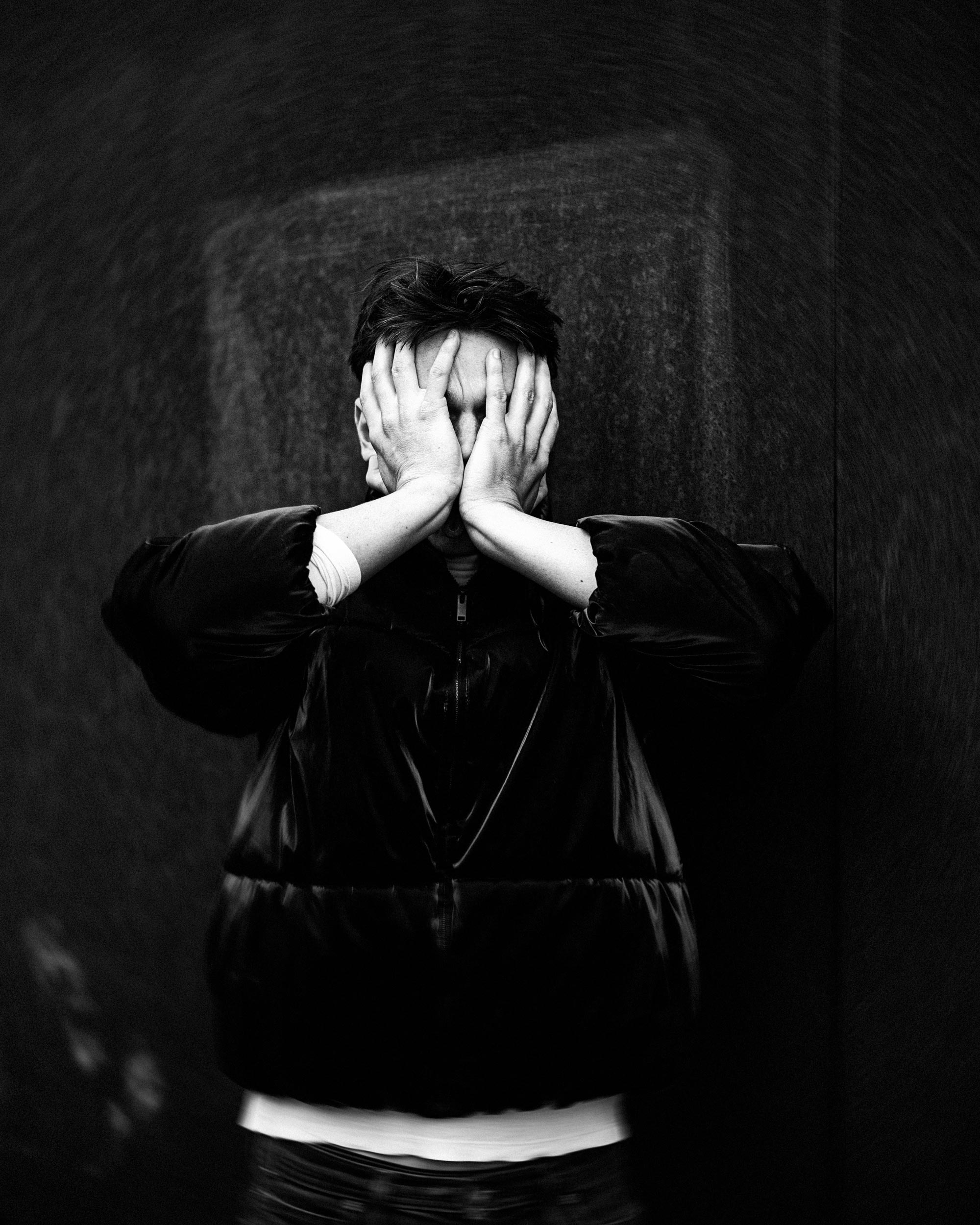
»In art, there’s a place for all body types and the diversity of humans.«
MYP Magazine:
You’ve been working as an artist for more than a decade. What did you learn about the human body in general in that time?
Alex Stoddard:
I’ve learned more of an appreciation for it, just through photographing myself and others often nude or in very revealing and intimate situations. That’s why I’ve been wanting to explore shooting more body types and bringing more representation to that. I think that’s important. In art, there’s a place for all body types and the diversity of humans.
MYP Magazine:
As you just said, in many of your pictures, you often show yourself completely nude. How has your art influenced your relationship with your body?
Alex Stoddard:
Honestly, no. I create my art in a very similar way to when I started. And I don’t think I’ve ever really been ashamed of my body and of showing it in that way. So, it’s remained largely the same. I’ve always tried to separate my view of myself from the view of the person I’m photographing. That’s why I see myself as a different person in my pictures. As a result, when I look in the mirror, I often see a character rather than myself. I use my body more as a tool to accomplish a task or to create a certain pose or look in the picture. And I try not to let it reflect on how I view myself outside of the images.
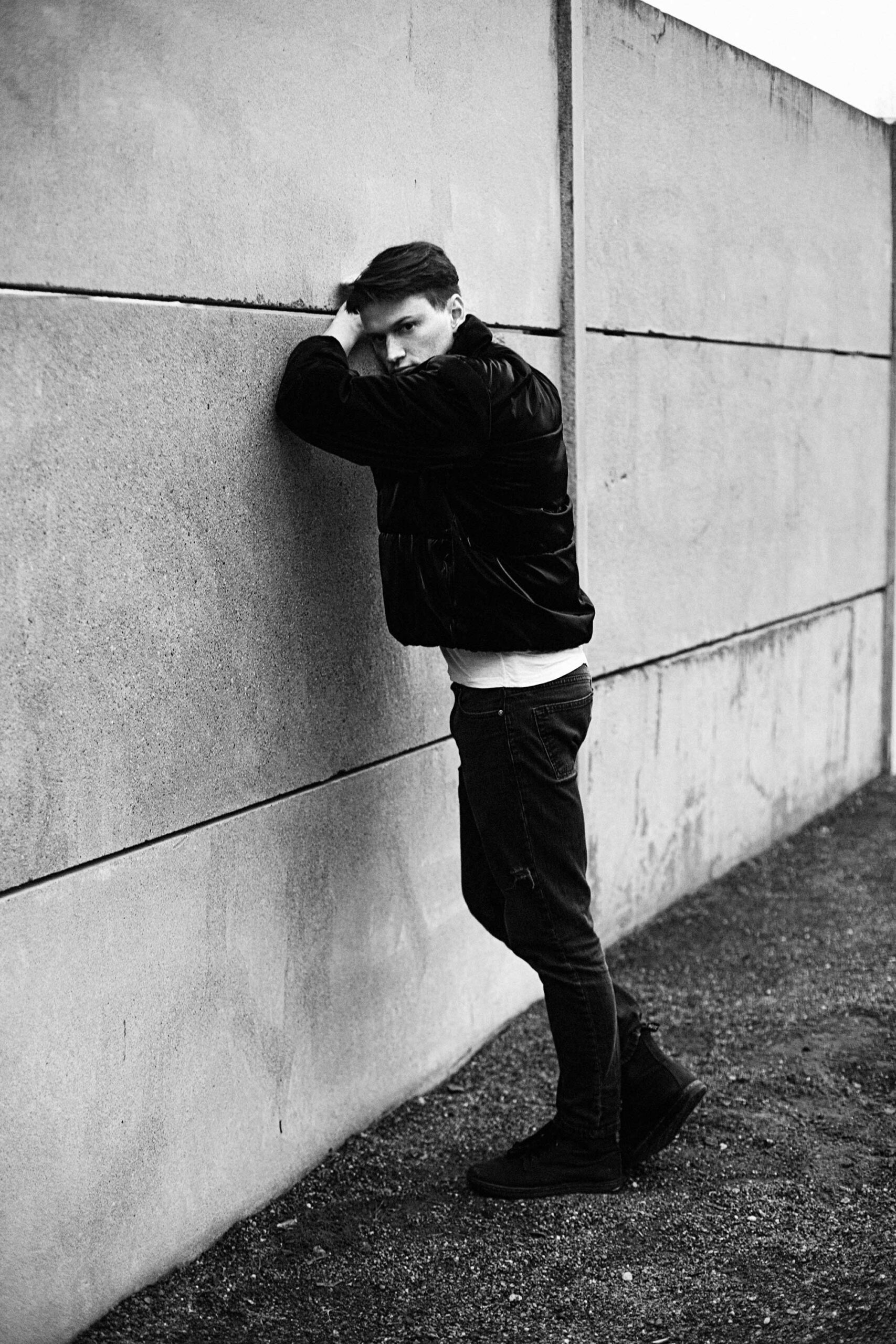
»I get a little annoyed when people use to water my work down to me being naked.«
MYP Magazine:
Only at first does the physical nudity in your photos seem to be a form of exposure. The second glance gives the impression of being confronted with a much more emotional form of exposure. Is that the actual definition of nudity for you?
Alex Stoddard:
Yeah, I guess I really do show more of my emotional life in the whole context, like being vulnerable, for example, than simply showing my skin. The physical aspect of nudity is such a tiny part of my work.
MYP Magazine:
Today, the human body often seems to be abused for pure self-expression, especially in social media. This influences many people’s relationship to their bodies because they believe their value is measured by their looks or fitness. Would you say that your images are a counter-position to this dangerous trend?
Alex Stoddard:
Not consciously. I don’t create my artworks intentionally against the sexualization of the body in the way it’s sold and commodified online. It’s just a lucky byproduct of it. But I do agree. I mean, the explore page on my personal Instagram account is also all about hot people with their shirts off. And to be honest, maybe it’s often exactly what I’m clicking on. It’s an instinct, in all of us, isn’t it?
But I kind of get a little annoyed when people use to water my work down to me being naked, using it as a sexual thing, and thinking that I’m being sexual about it or have a kink of exposing myself online with my photos, where I’m portraying myself or my subjects nude in an almost asexual way a lot of the time. It’s more about showing the natural form than looking attractive or trying to get clicks by showing the naked body. And, in fact, it usually works against me, because my posts are often flagged or taken down because they’re showing a little too much skin for certain platforms.
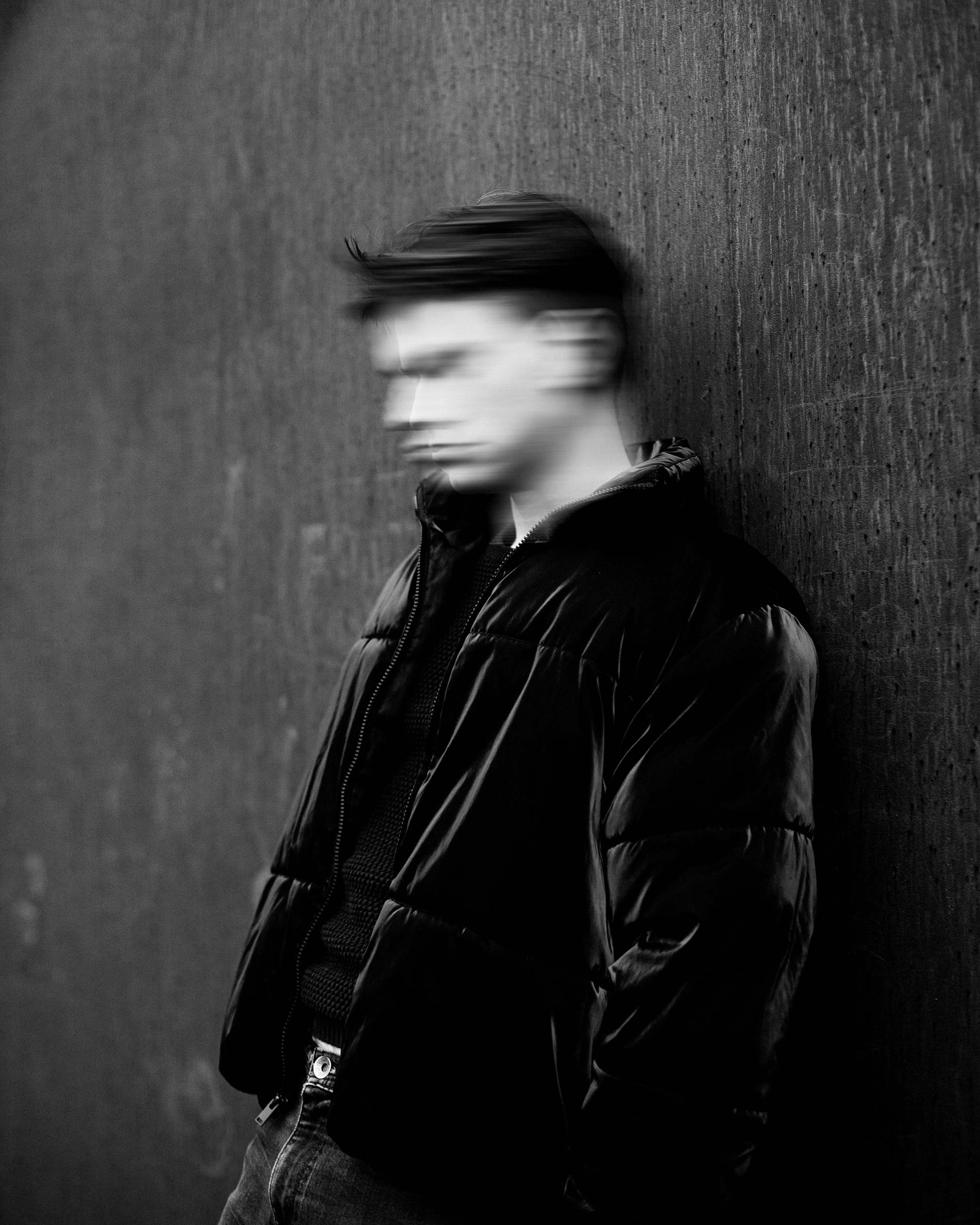
»People labeled me as different before I even knew that myself.«
MYP Magazine:
You were born and raised in rural Georgia. What memories do you have of your childhood and youth?
Alex Stoddard:
I actually had a really happy childhood, all things considered. I remember spending all of my time outside. I have many brothers and sisters, and my mom would always tell us that we can’t come in until the sun goes down. So we would spend all of our time outside, like in a spa in the forest and going to the rivers. I think a part of what formed my level of comfort in nature is spending so much time in it. Besides that, I had very supportive parents who were extremely encouraging when I started with photography—and they are still my biggest fans.
MYP Magazine:
In the year 1993, when you were born, President Clinton signed “Don’t ask, don’t tell” into law, which prohibited gay or bisexual people from serving openly in the military. How do you remember growing up as a queer kid in rural Georgia?
Alex Stoddard:
I honestly knew that I was different since I was very young, but I couldn’t really put my finger on it until adolescence. That was when being gay became a part of my life, and I just started to feel different and was kind of drawn to different things. In my later teenage years, I became more and more isolated because the environment where I grew up is very conservative and religious. I think people there labeled me as different before I even knew that myself. That made me retreat into my shell a bit more as I didn’t feel like I fit in. And I loved being alone. So it was kind of a perfect storm for just putting me into isolation.
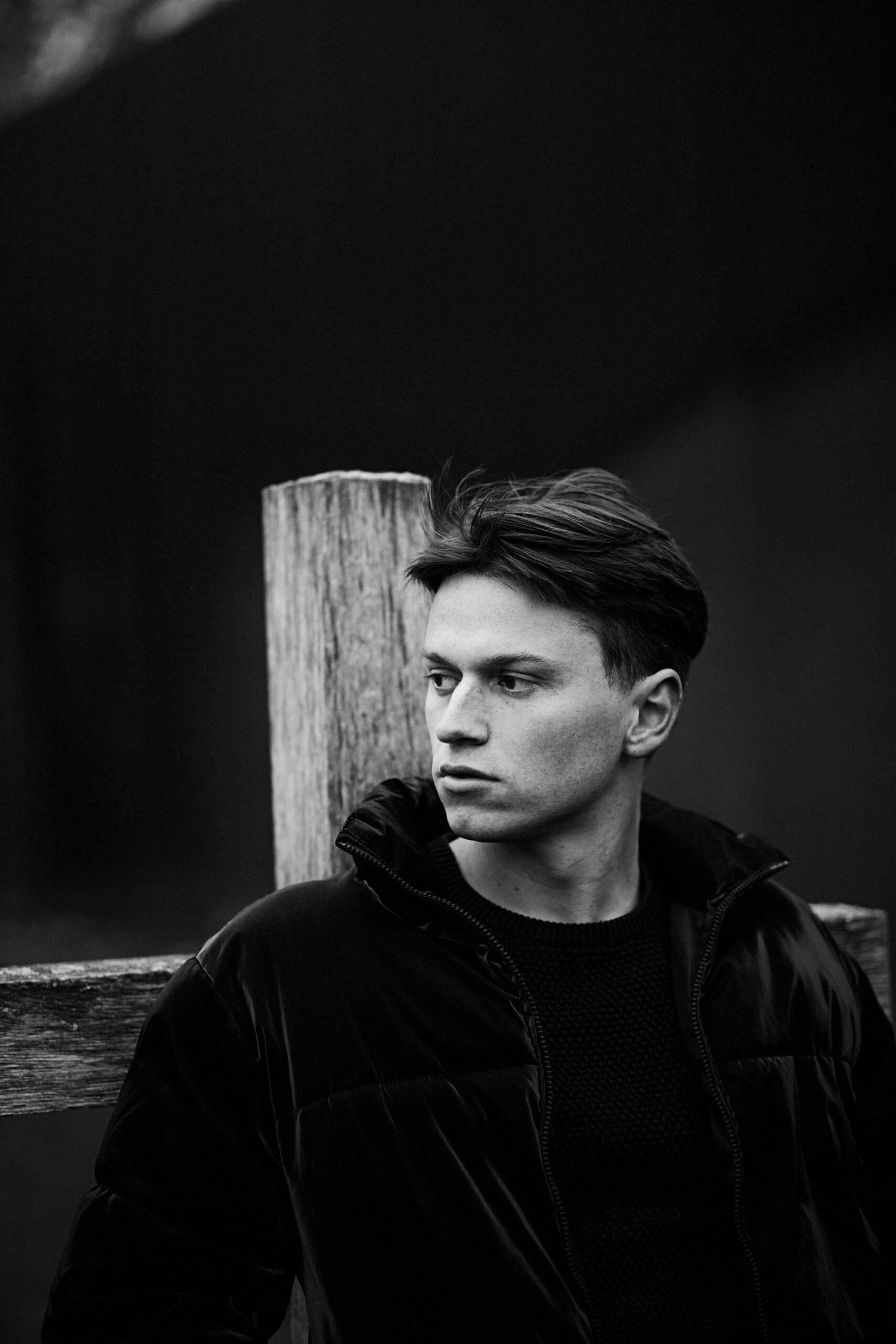
»Going out into nature is like opening a book.«
MYP Magazine:
In the bio text on your website, we read: “Photography became a means of escape, allowing him to construct elaborate scenes and step into the role of different characters through costumes and posing.” What did you want to escape from?
Alex Stoddard:
Well, not so much anything that was happening to me. I wasn’t really bullied or abused in any way, so it wasn’t like a dark escape. It was more of an escape from the mundanity of life. Everyday life inside is depressing, just being connected to your phone, and staring at it all day long; or seeing what’s going on in the news and what tragic events are happening now. Going out into nature is like opening a book. You just forget about your daily life or the stresses and responsibilities that you have.
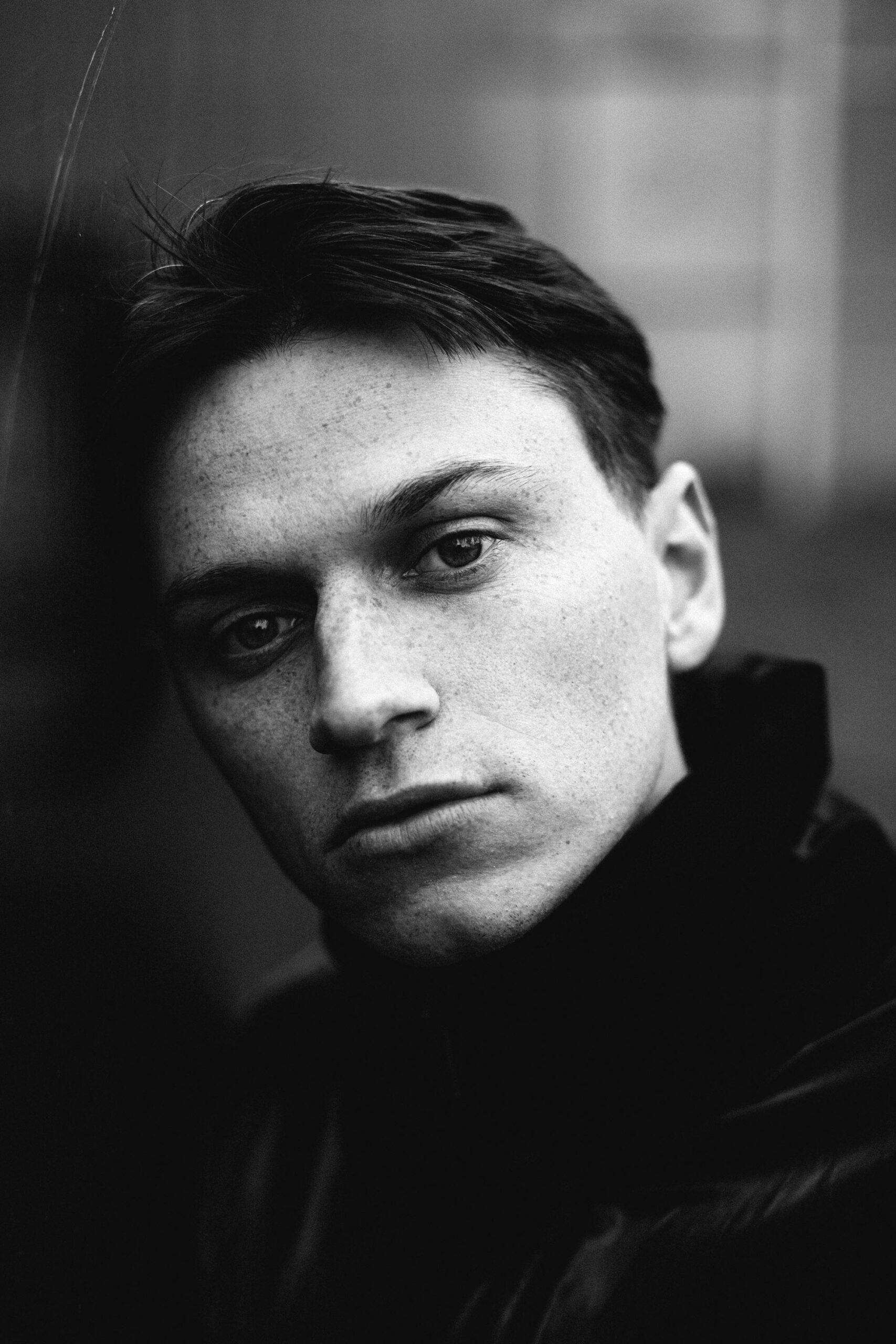
»I knew that I wouldn’t really have a career if I continued to live where I was.«
MYP Magazine:
Isn’t it counterproductive then to move from the countryside to Los Angeles as you did in 2012? It’s a place known more for traffic jams than for untouched nature.
Alex Stoddard:
A little bit. But I always knew that I had to move away one day because I never really fit into my surroundings there—and even more so for my work. I knew that I wouldn’t really have a career if I continued to live where I was. So, when I was 18, I moved to L.A., which was a week after I graduated from high school. It was actually half for work and half for love because I was in a long-distance relationship back then.
MYP Magazine:
In the countryside, there is usually a different social cohesion between people, and friendships also seem to function differently. How did you acclimate socially in Los Angeles?
Alex Stoddard:
The first weeks there were super overwhelming. I mean, I was coming from a place where there were two lanes, one going this way and one going that way. In L.A., I not only found ten-lane freeways. There are also people everywhere—and there’s almost no nature to escape to, which was always the place where I used to go to meditate or to feel a sense of peace. But socially, it was okay because I was in a relationship with someone who lived there, so I kind of just adopted all of their friends and family. It was like gaining a new set of people. That’s why I wasn’t completely alone. I don’t know if I would have had the courage to do that completely on my own if I didn’t know anyone there at such a young age. But I’m glad that I did. And I think it was necessary to enter a new place and immerse myself in something completely foreign and new. That made me much stronger.
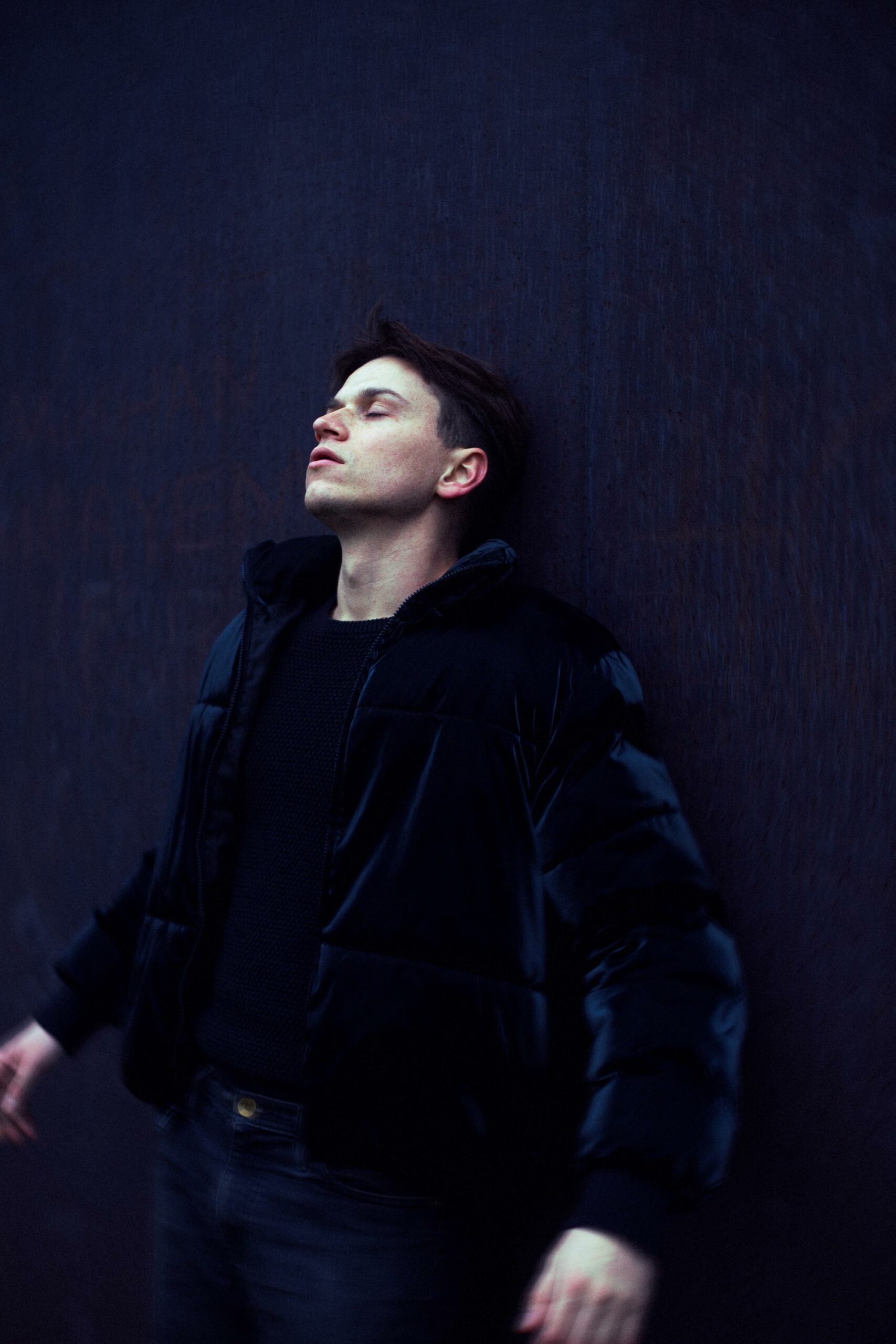
»Adolescence is a time when a lot of different things are happening at once.«
MYP Magazine:
Has moving to Los Angeles changed your desires or artistic focus in any way?
Alex Stoddard: (pauses for a moment)
It’s hard to say if moving there did as much as just growing up because adolescence is a time when a lot of different things are happening at once. You can’t really pinpoint what is informing your creative decisions necessarily, but moving there did. That’s what still makes me want to travel more and seek out these smaller towns where there’s a lot of nature around. Where I live now is very urban. As a result, I no longer feel so comfortable in one place and feel the desire to expand and go outside.
MYP Magazine:
Your earlier works seem to be more bloody and violent. Did you get rid of some demons over time?
Alex Stoddard:
I’ve noticed that myself. I used to call my work dark, but I don’t think I’ve created a lot of dark work in the past couple of years. I think I did work through a lot of that and explored it visually. But now, I’ve put it to bed.
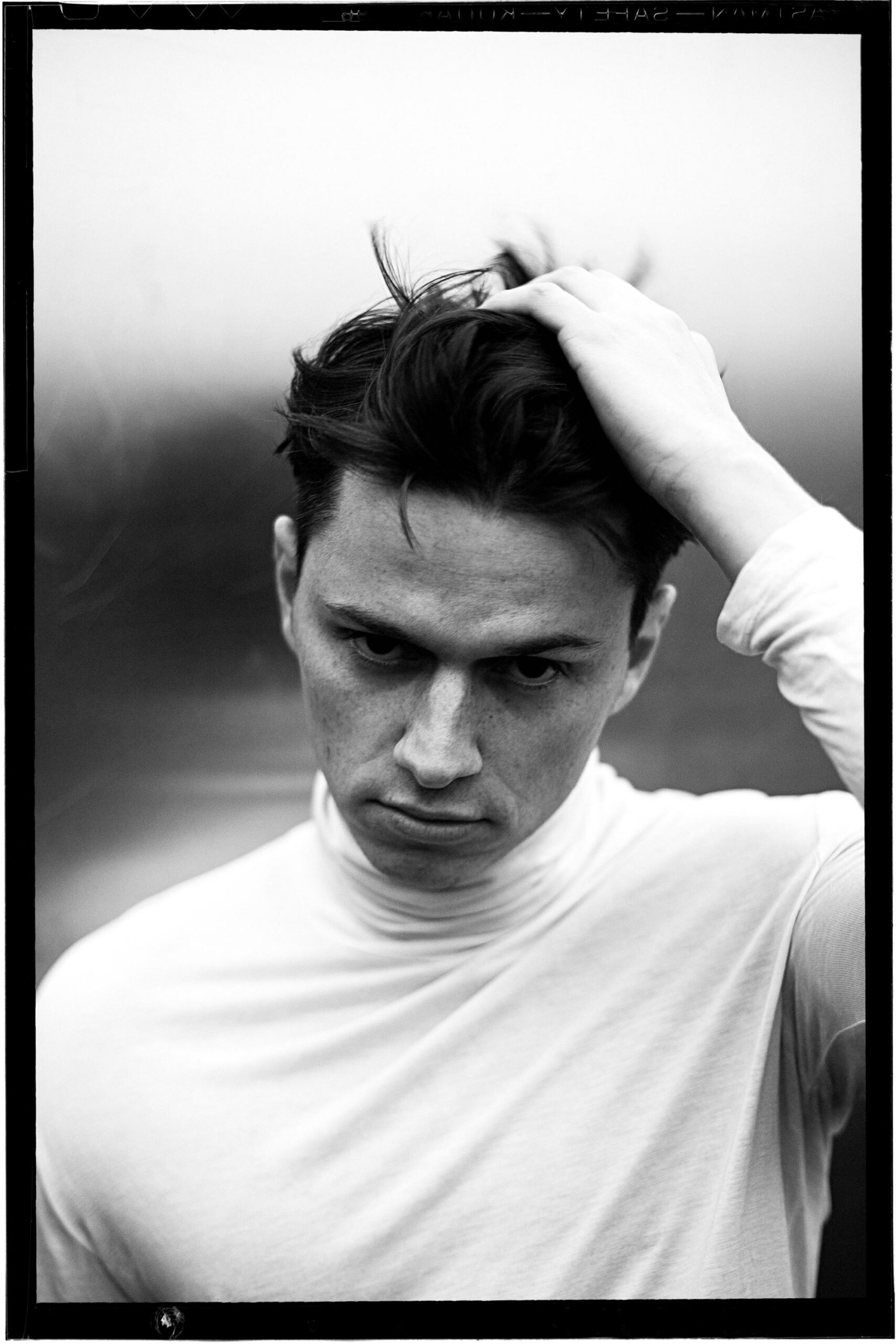
»I really wanted to focus on that very transformative, beautiful, and tumultuous period in my life.«
MYP Magazine:
In your recent INSEX series, you explore the parallels between metamorphosis in the natural world and human coming-of-age. You call it “a colorfully dark world of budding sexuality and crawling insects.” What inspired you to this topic?
Alex Stoddard:
Simply put: I wanted to create something very authentic. That’s why I tried to think back to my adolescence, which was a time in my life when I was feeling emotions the strongest; a time when things felt the most dramatic and emotional. I really wanted to focus on that very transformative, beautiful, and tumultuous period in my life, which encapsulated so many different emotions. I thought that would be a very good starting point for drawing visual ideas.
Interestingly, in my teenage years, I already created some photographic works that were about the topic of metamorphosis. When I was going back through some of my older work, I stopped on these because they really struck me. Then I thought about how I could expand on this world visually. That’s where the idea slowly started to come together. In this context, I must emphasize that I shot the INSEX series over about five years. I really took my time crafting this world and all its different parts I wanted to tell. When you look at the images, they also photographically play into the idea of transformation and change because I also went through a few different visual styles that I was interested in.
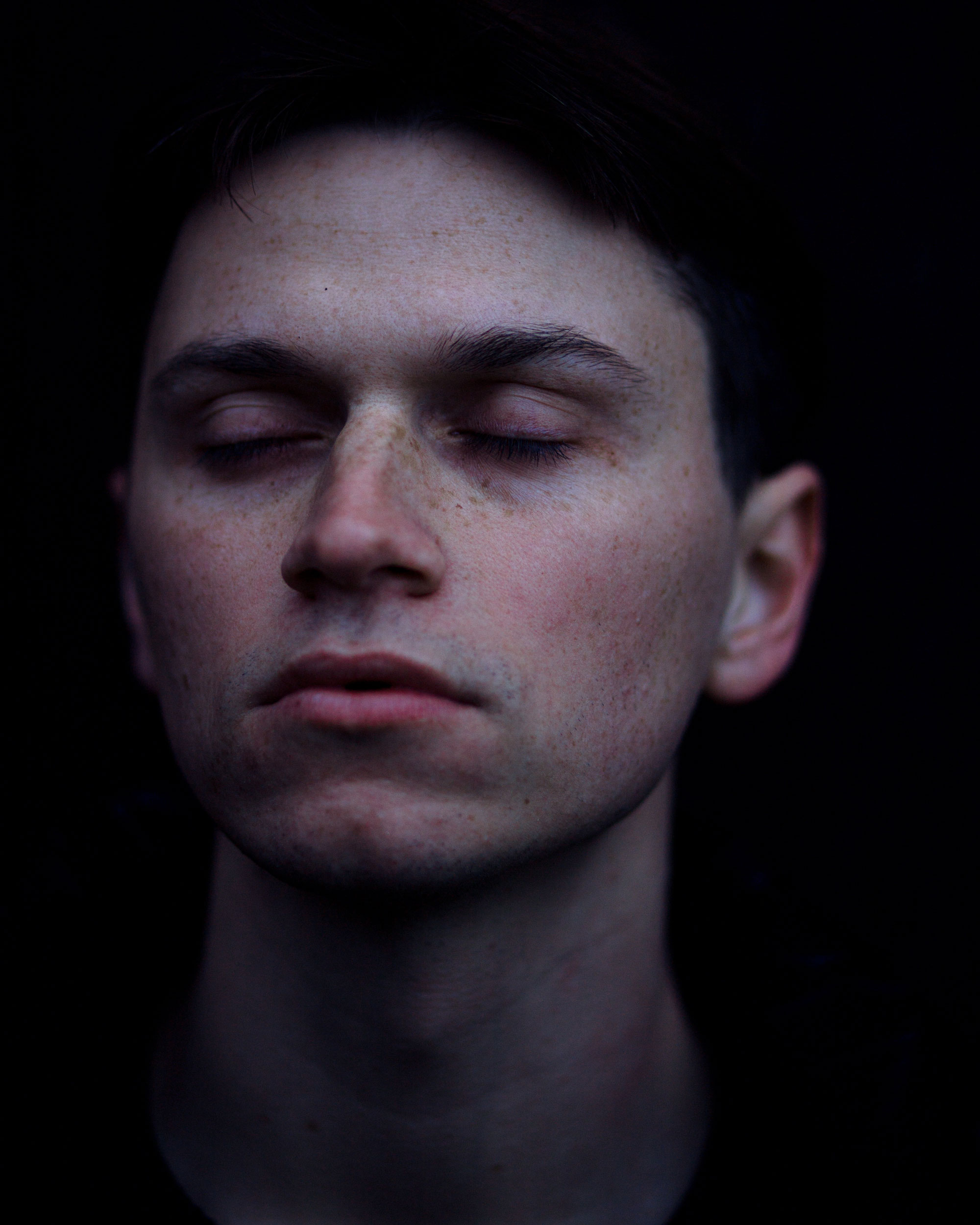
»Most languages are not really designed to include new gender identities.«
MYP Magazine:
In February 2022, we met director Jamie Sisley and actor Wyatt Oleff for an interview about their film “Stay Awake.” The movie tells the story of two teenage brothers in rural America who must deal with the prescription drug addiction of their mother. One of the main characters is played by Finn Argus, a person who is also featured in some of your INSEX artworks. When and how did you guys meet? What connects and unites you?
Alex Stoddard:
I met Finn the same way that I meet a lot of people that I work with: just through Instagram. That’s the beauty of social media – you can connect so easily with people. I reached out to Finn because, on the one hand, I was drawn to their appearance. I think they have a very painterly, almost angelic look that I love to photograph. And on the other hand, I loved what they were doing work-wise, including the way they’re embracing their identity of being non-binary and also being very vocal about that online.
MYP Magazine:
It is fortunate that the English language has the word “they” for people who don’t identify as “he” or “she.” Such a word does not exist in this form in the German language.
Alex Stoddard:
Most languages are not designed to include new gender identities.
MYP Magazine:
Are these identities actually new? Or are people just revealing their identities more often than in the past?
Alex Stoddard:
Yeah, good point.
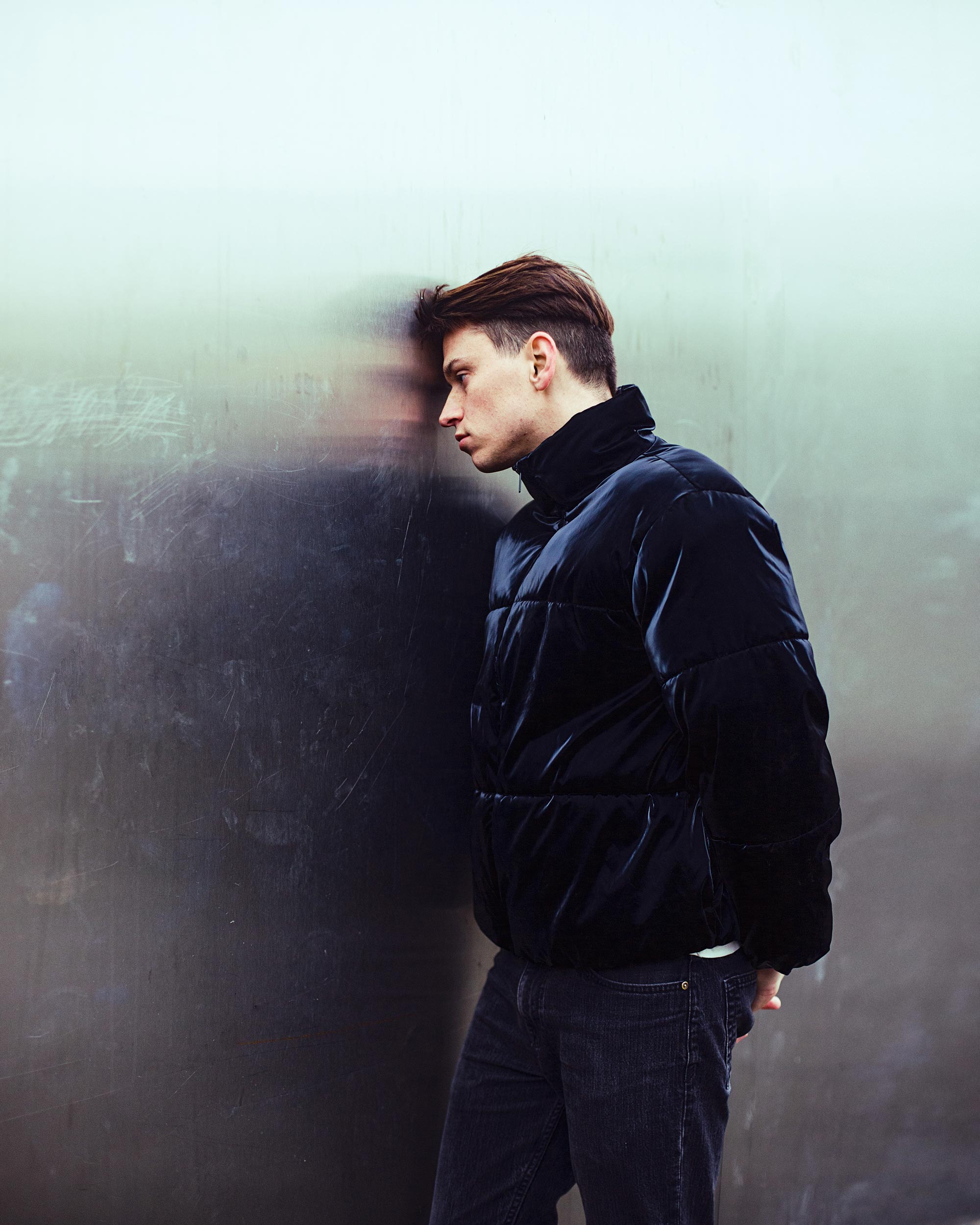
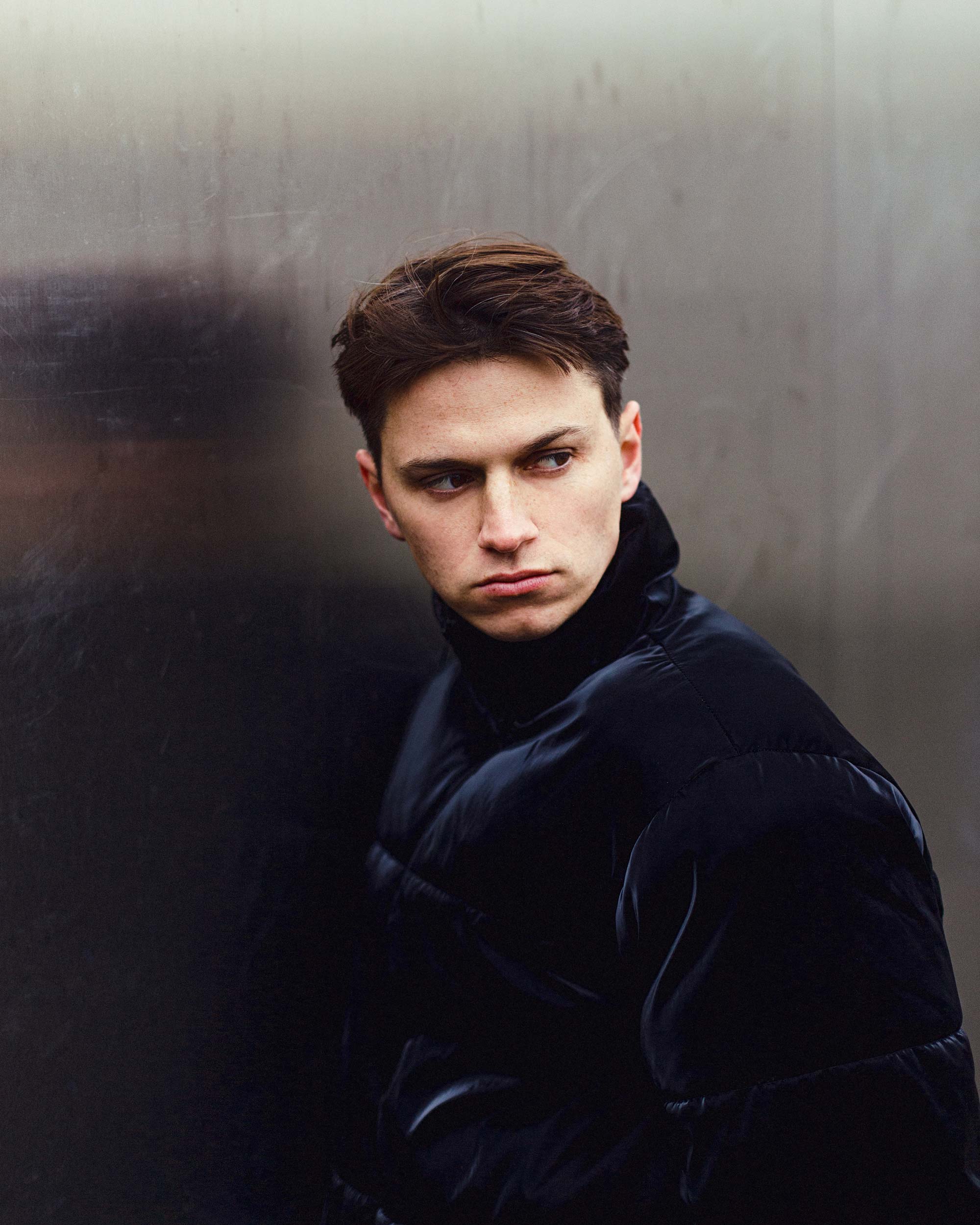
»In America, the loudest voices are also the most extreme ones.«
MYP Magazine:
The United States seem to be in the midst of a culture clash with representatives of the “Don’t say gay” campaign in one corner and the demands of socio-political progress in the other. What are your concerns and hopes for the future of your country? Would you say that your work can build a bridge for conservatives to playfully approach more progressive ideas?
Alex Stoddard:
I’ve experienced that, when it comes to that discussion, most people are positioned more in the middle. I think you just hear so much about it because the two extremes are so vocal that it seems like that this is it. But I feel that in America, most people are kind of left-leaning middle. The loudest voices are also the most extreme ones. That gives us this false impression that there’s this tumultuous battle going on.
When it comes to my work, I think it’s not something that I necessarily strive to do or consciously think about, but maybe it’s a tiny piece of showing a person – who identifies as male – in situations that are not necessarily masculine or traditional. I think I mostly just create from what feels authentic to me, and I try to leave outside influences out of it.
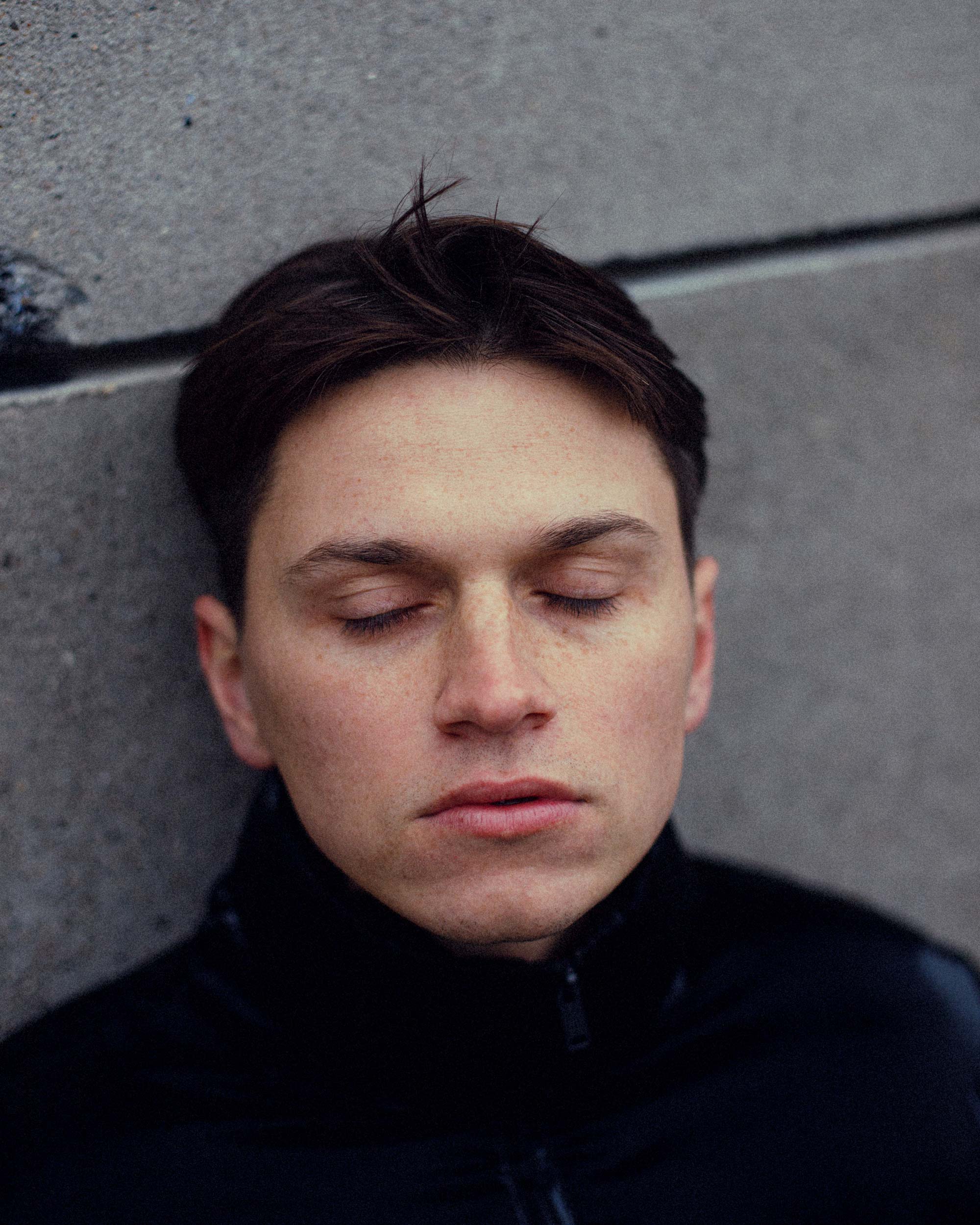
»I’d like to explore how my worlds can be displayed in moving pictures.«
MYP Magazine:
More than 12 years ago, on April 25, 2010, you posted your very first photo on Flickr. It shows you with a Nikon camera in your hand, your face and one arm are all covered with tape. In the caption, you say: “I decided to take up a 365. Guess I’ll be attached to this camera for a while.”
Alex Stoddard: (smiles)
Little did I know I was predicting my future.
MYP Magazine:
What prediction would you make today in terms of your life and work if you were looking another twelve years into the future?
Alex Stoddard:
It’s hard to say. I think photography will be with me for the rest of my life. It’s something that has almost come to define a part of my identity in a way, but I’d like to expand beyond just being a photographer and explore more of myself as an artist in general. That also means exploring different mediums than photography. I think film will probably play a role in that. I’d like to explore how my worlds can be displayed in moving pictures rather than just still images and what that would look like. But overall, I hope to just continue to live in the same way. I have a very free and authentic life; I live according to what makes me happy. I don’t feel the need to follow any particular path, I just follow what I’m passionate about and what makes me happy. And when something stops making me happy, bringing me joy, or making me feel fulfilled, I have the freedom to go and change my situation.
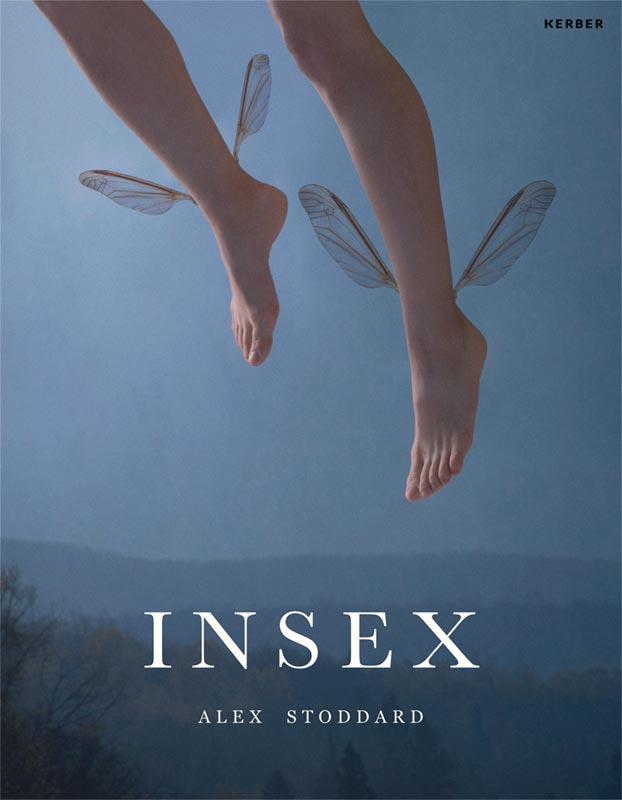
INSEX by Alex Stoddard:
Hardcover. 128 pages. 9.5 x 12 inches.
Published by Kerber Verlag and printed in Germany.
Available on alexstoddard.com/insex or at Kerber Verlag.
More about Alex Stoddard:
Photography by Osman Balkan:
Interview & text by Jonas Meyer:
Text editing by Caroline Tyka:
